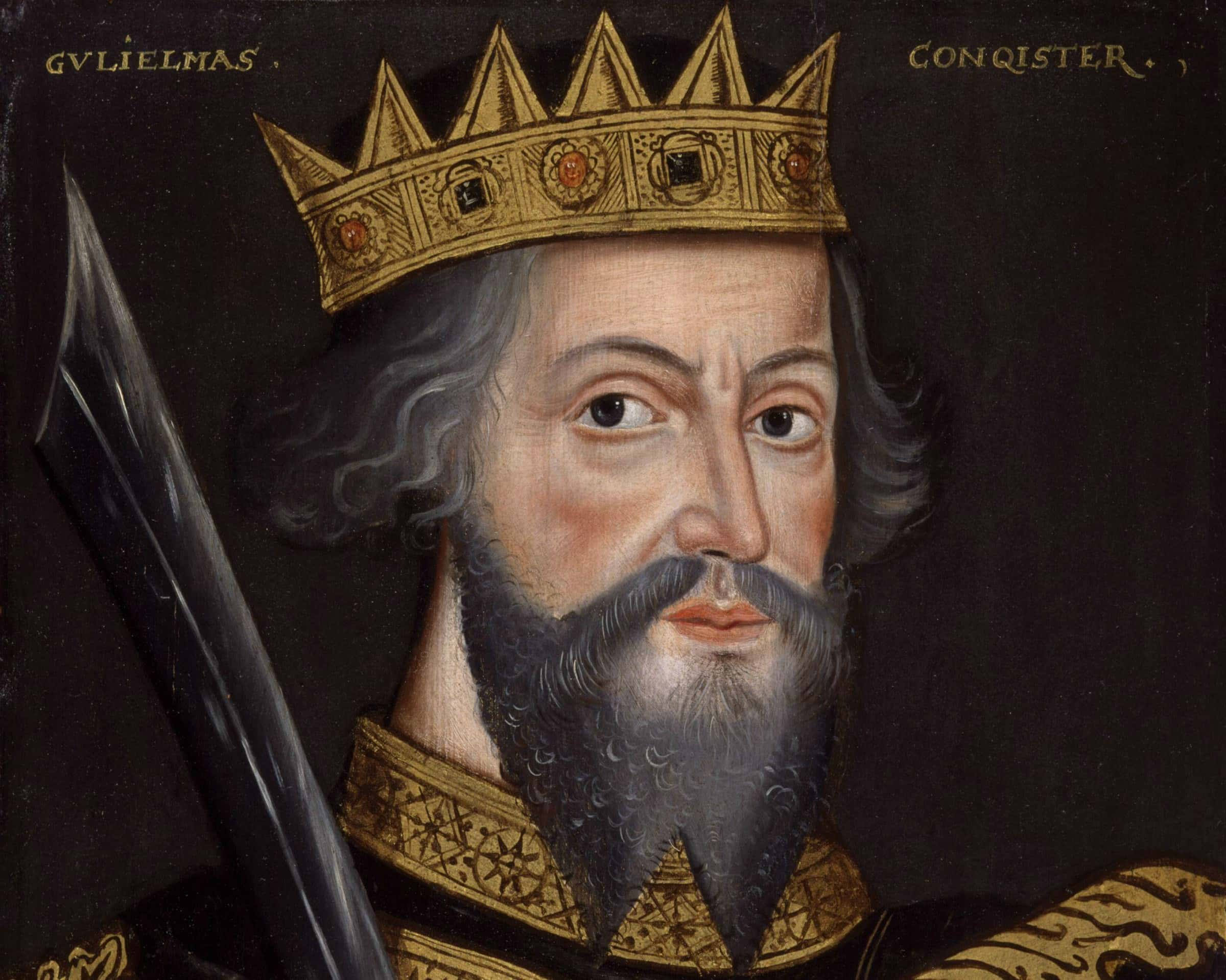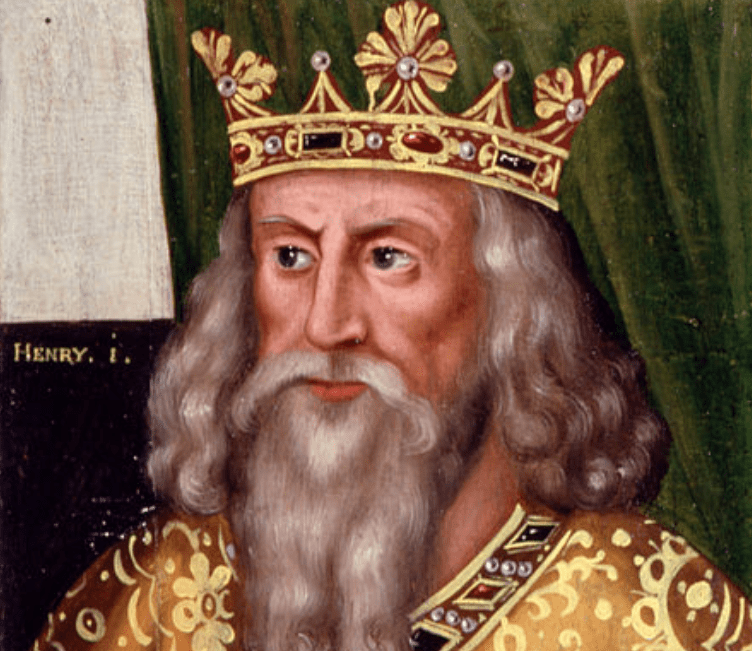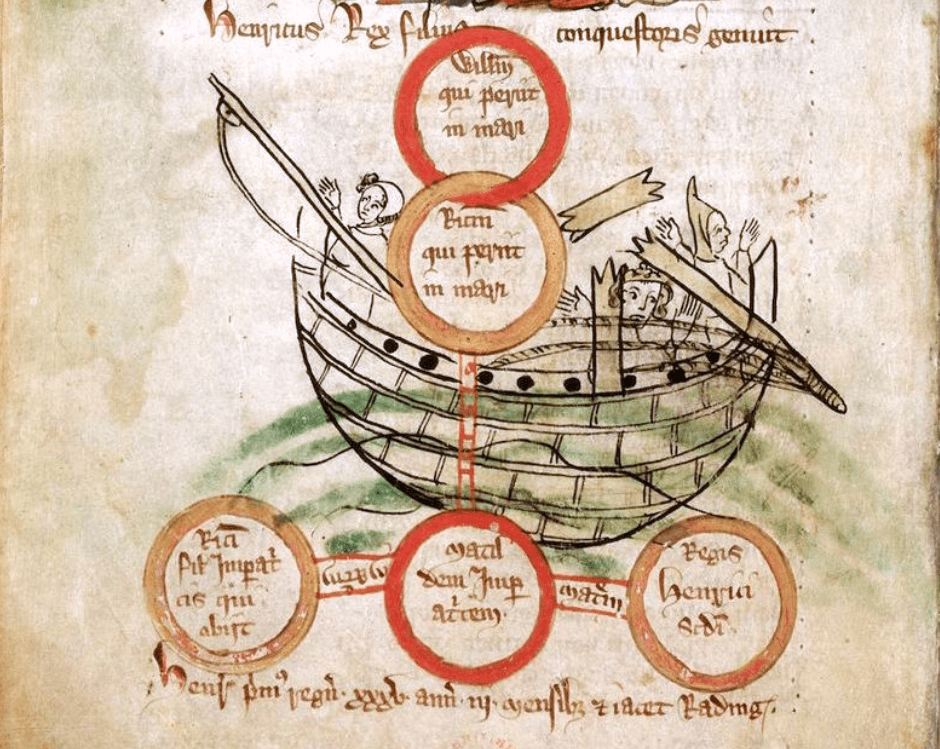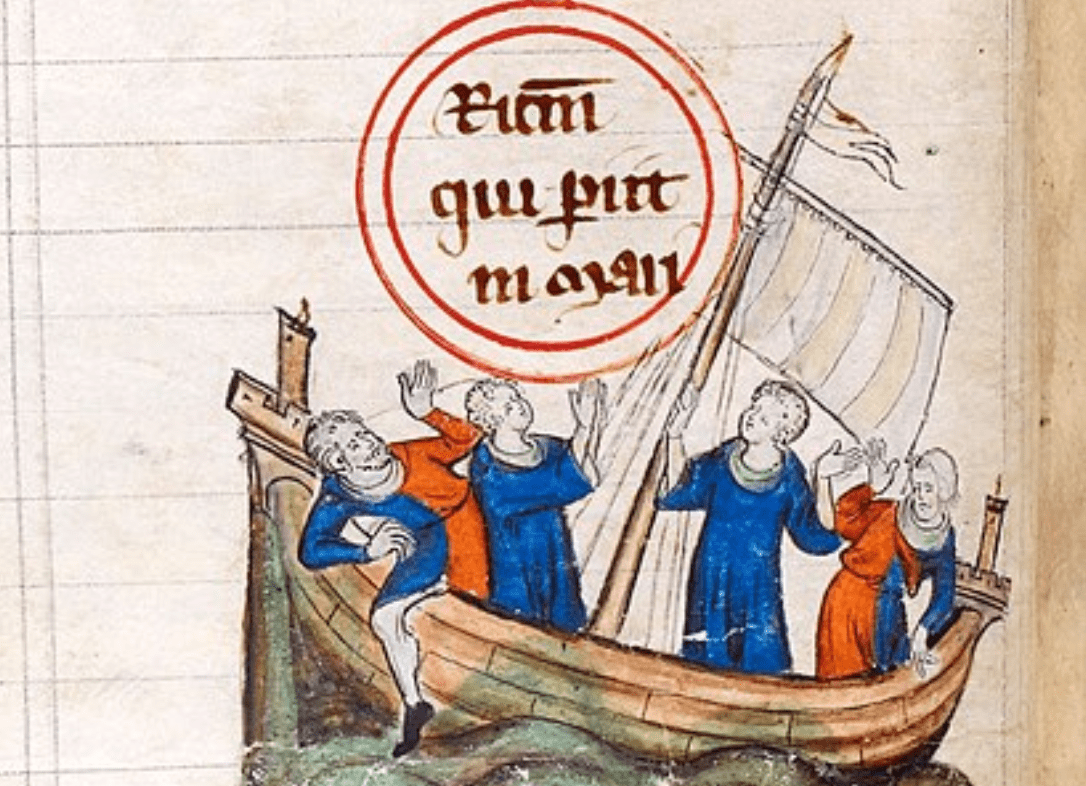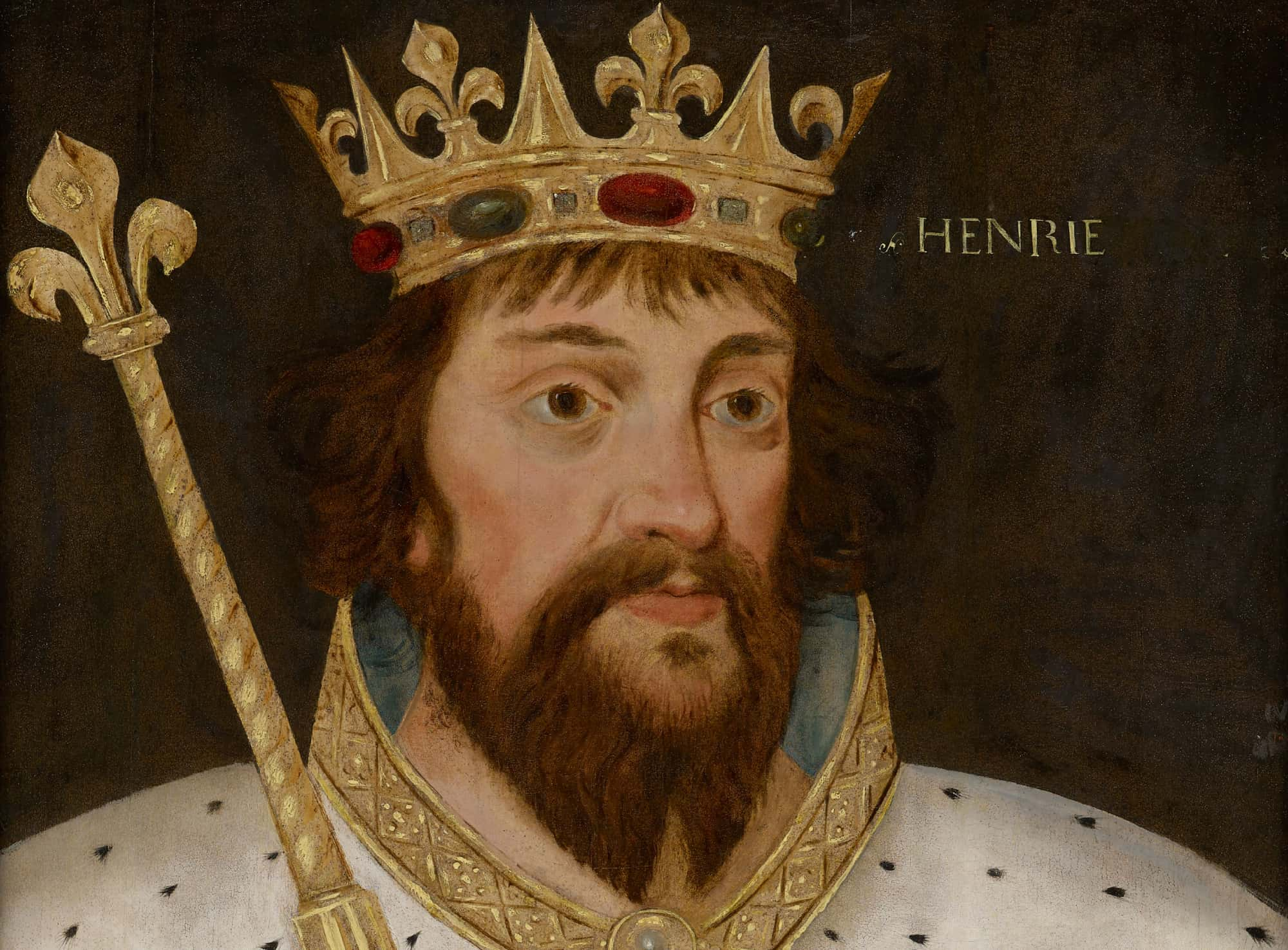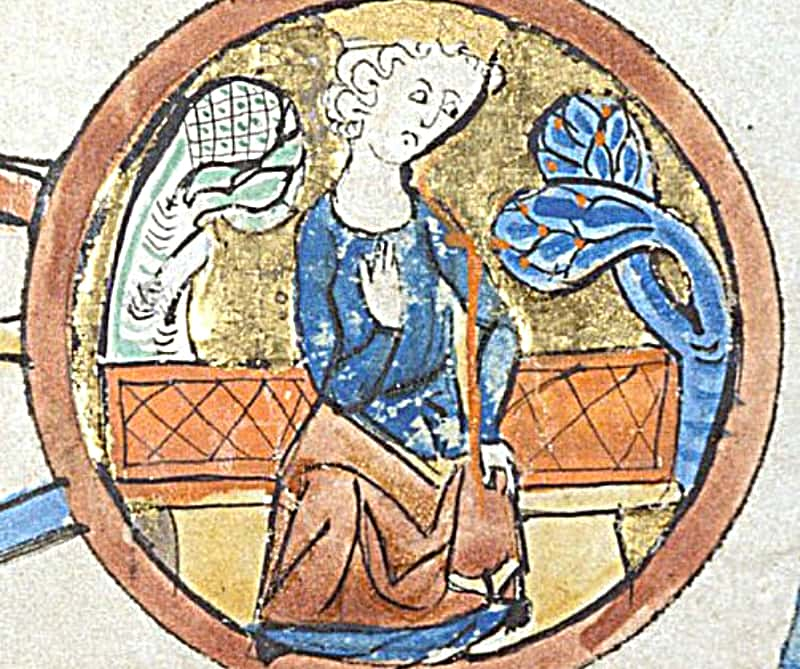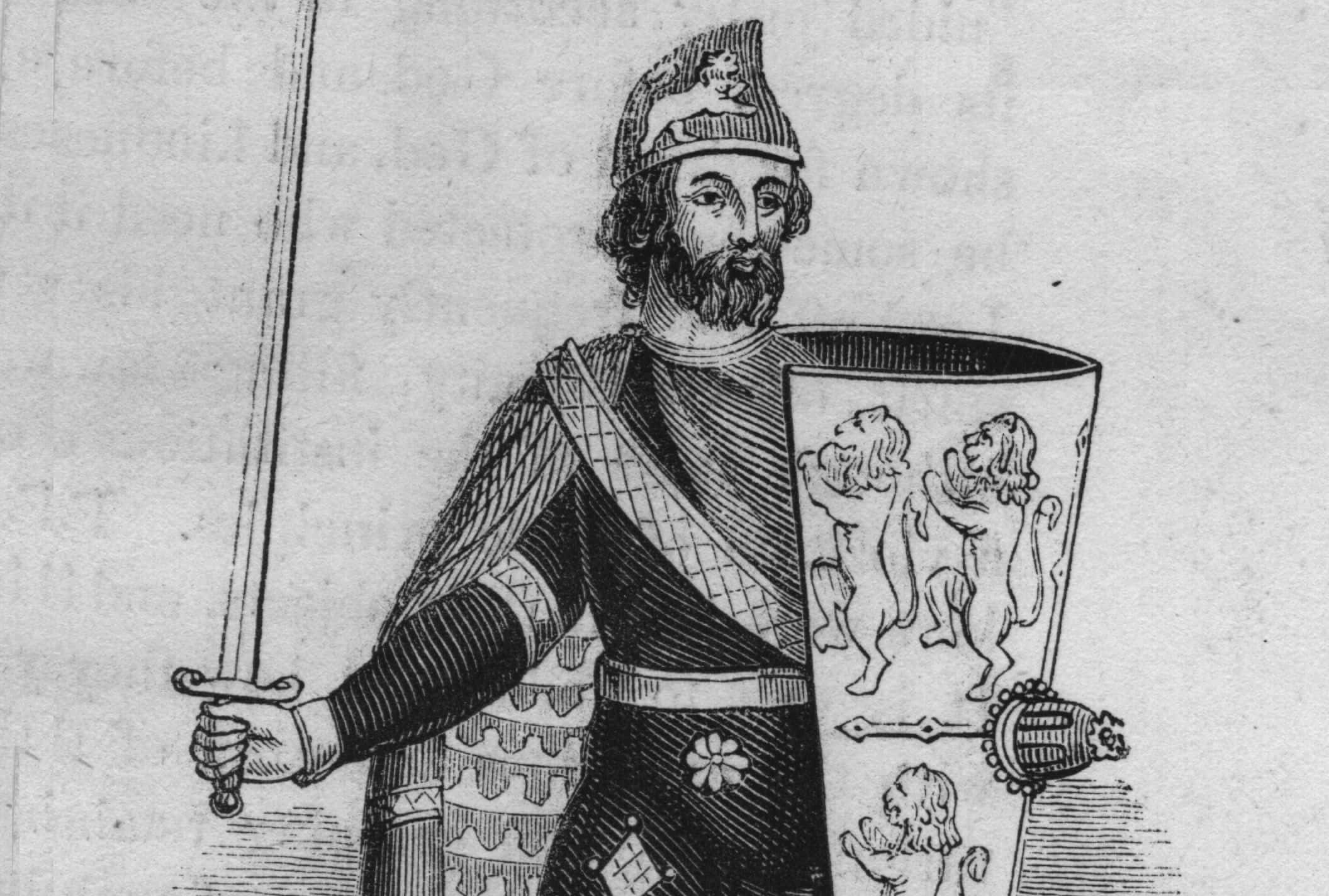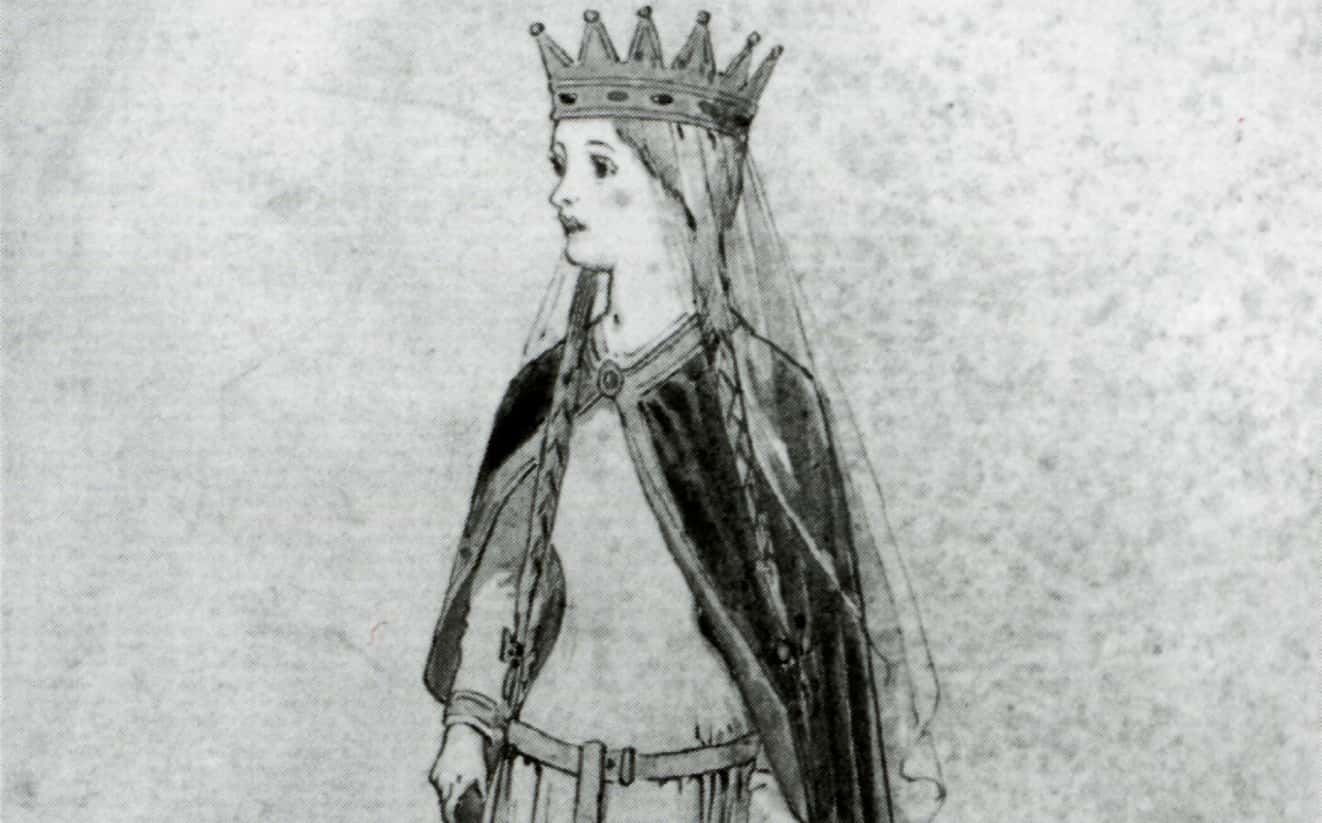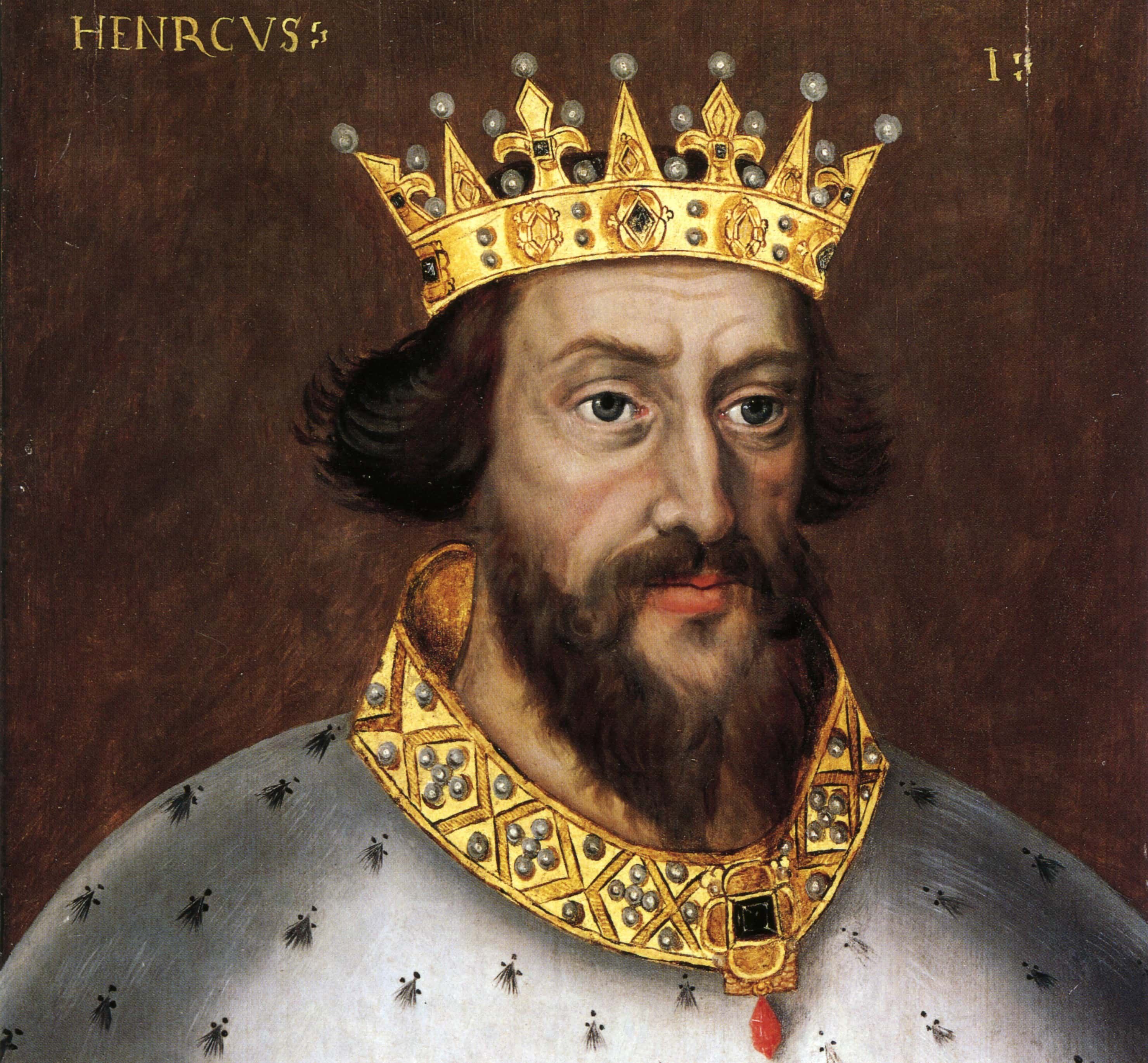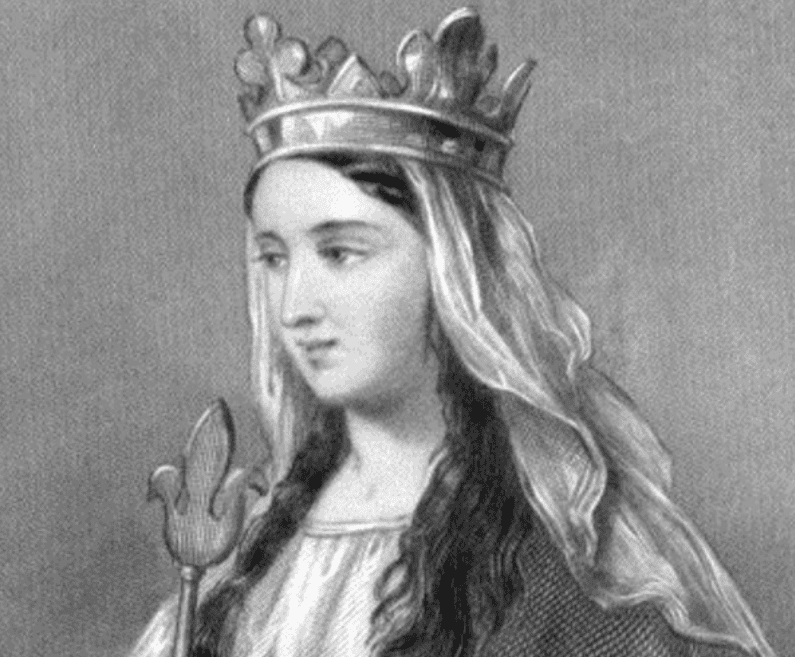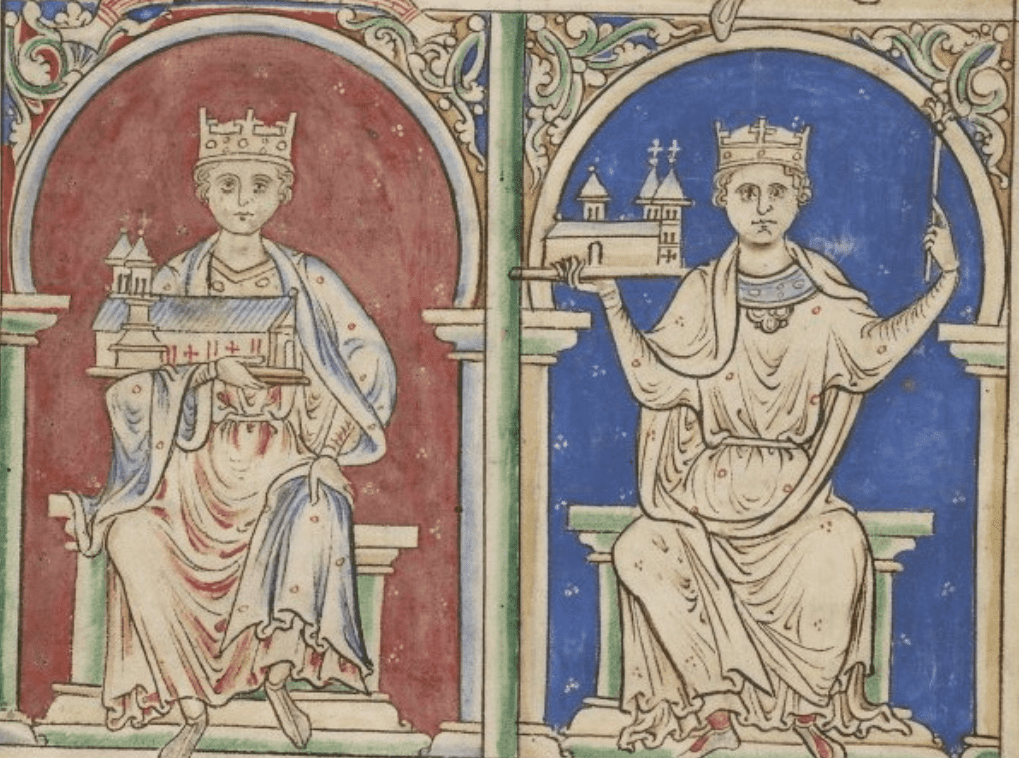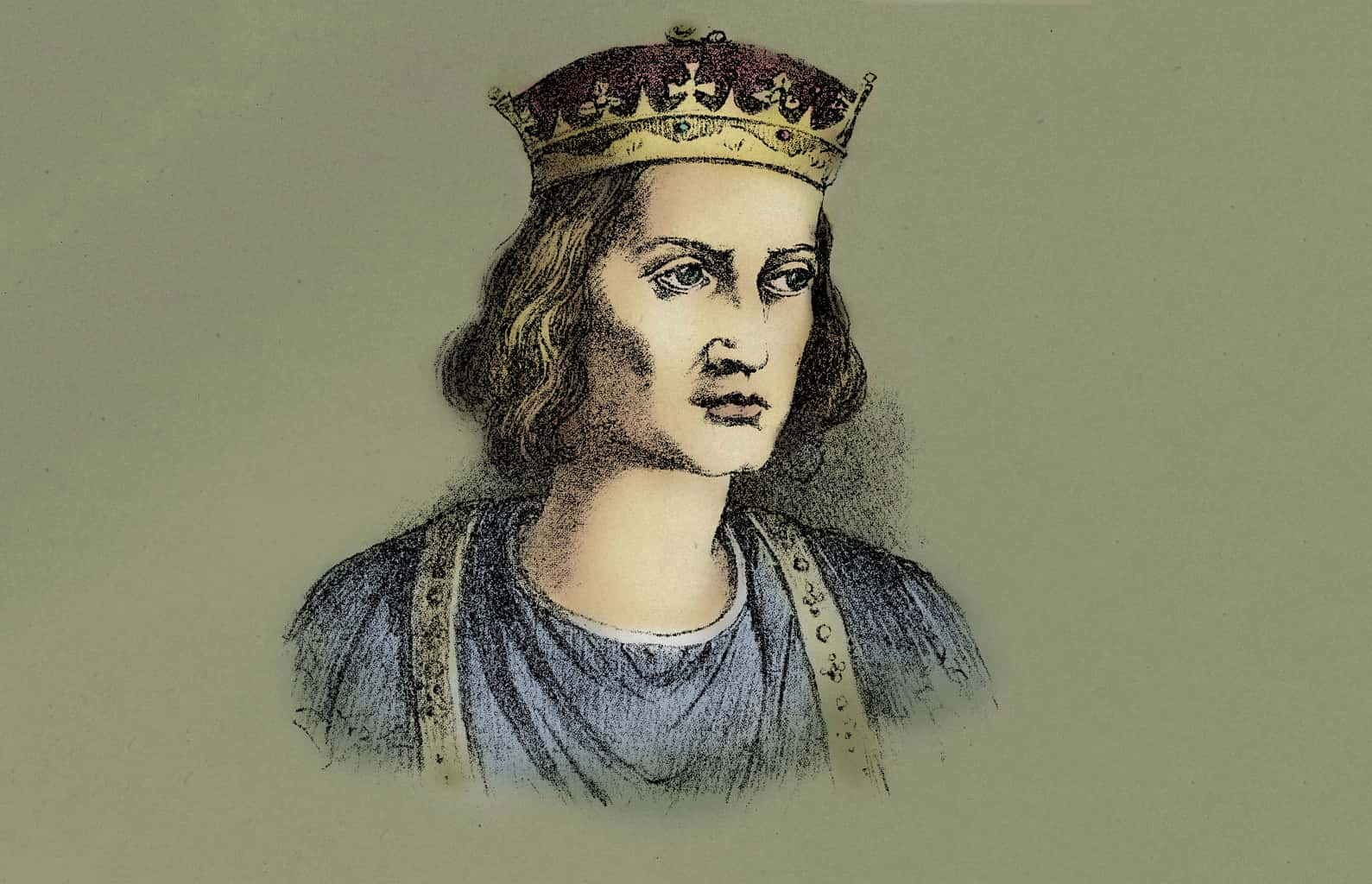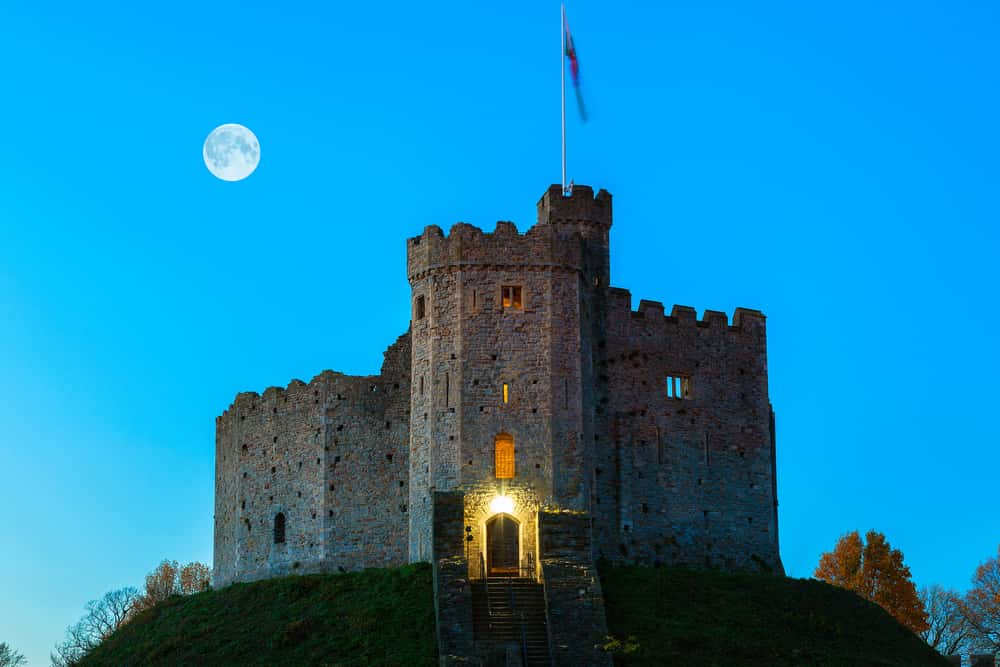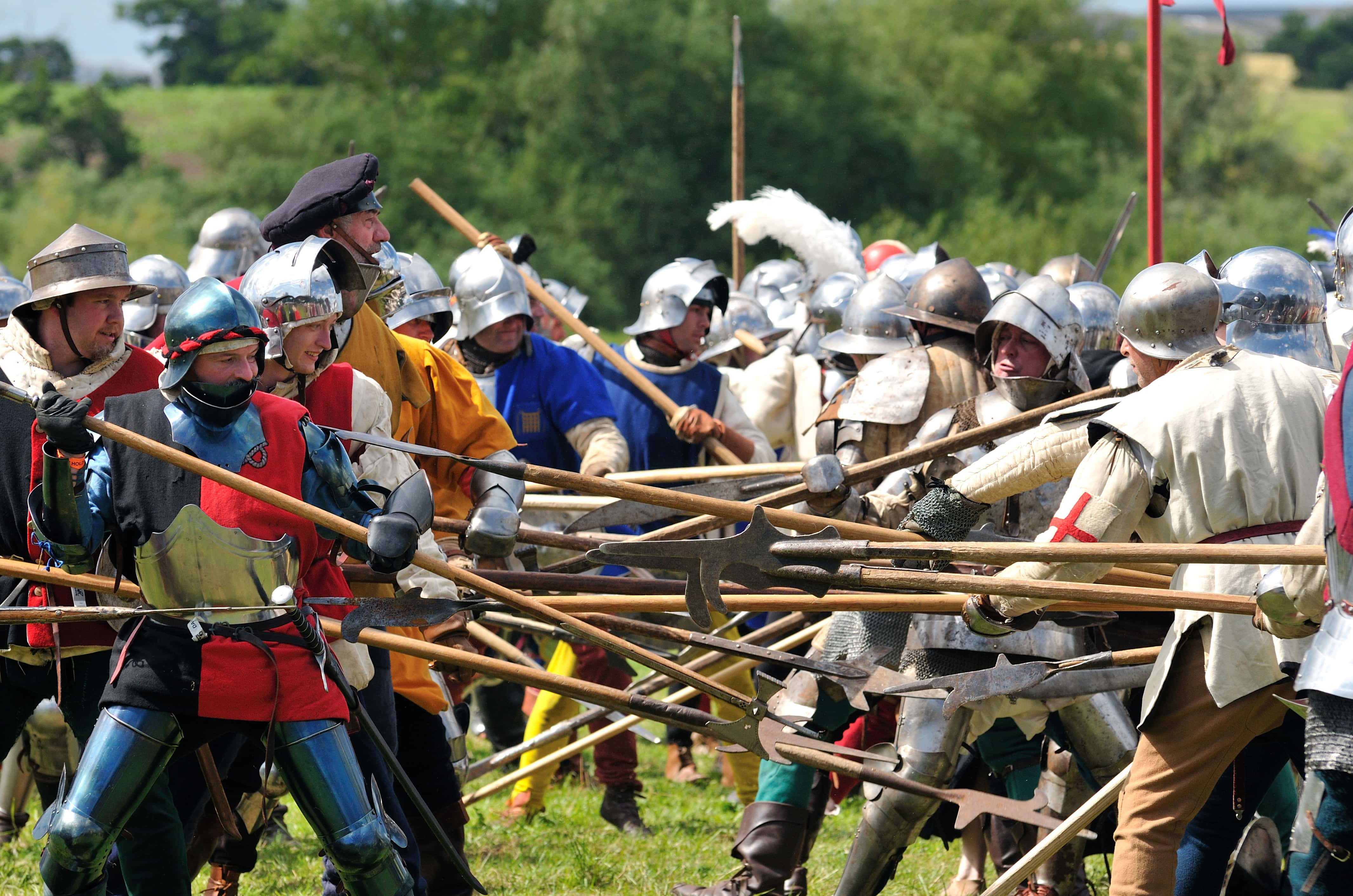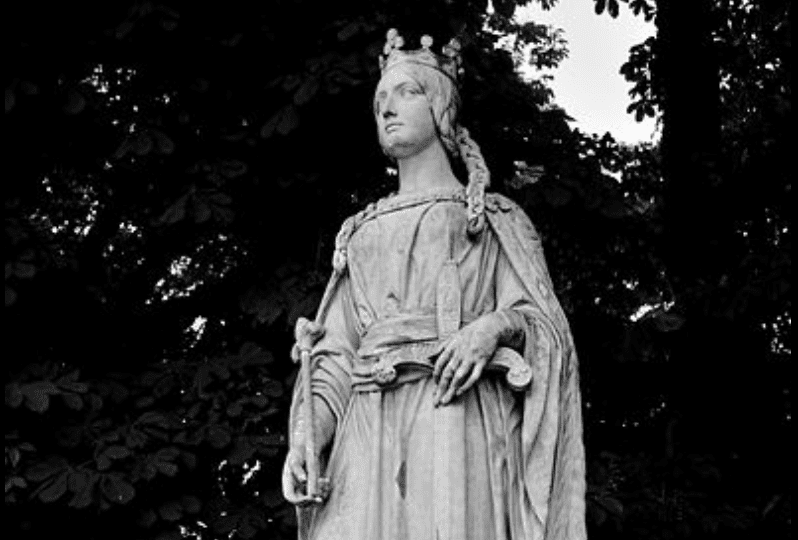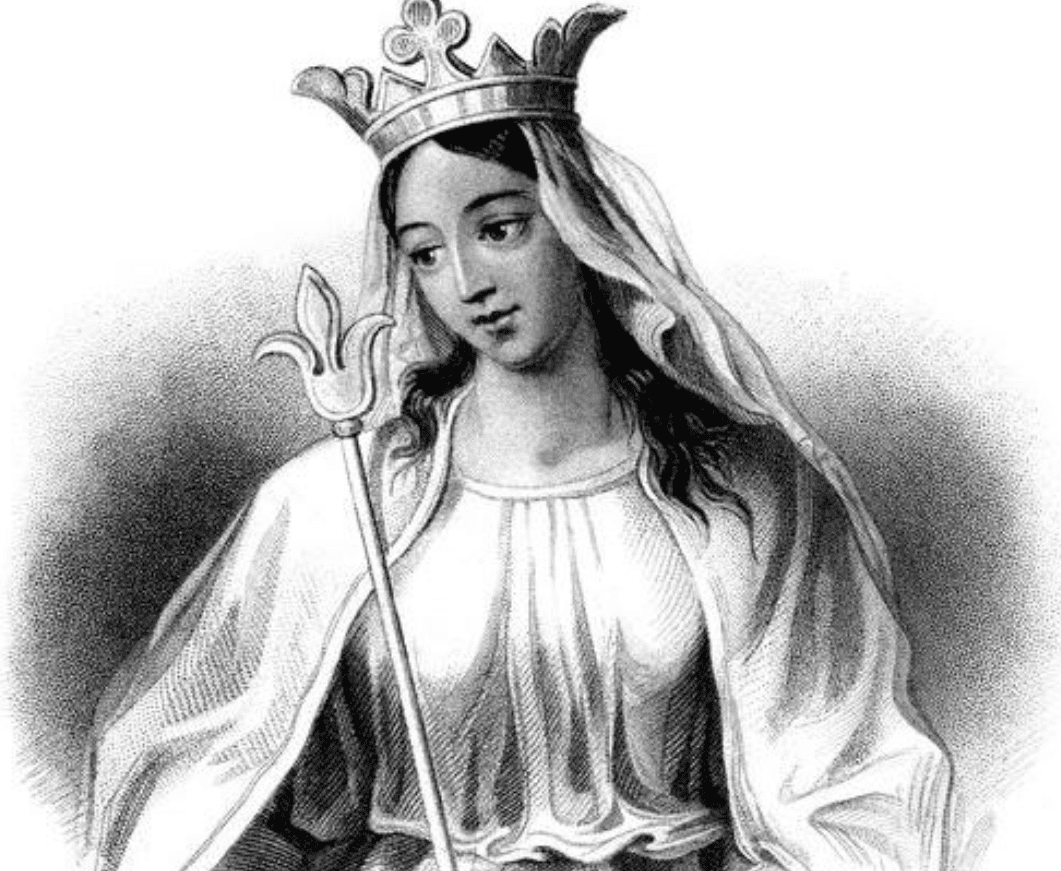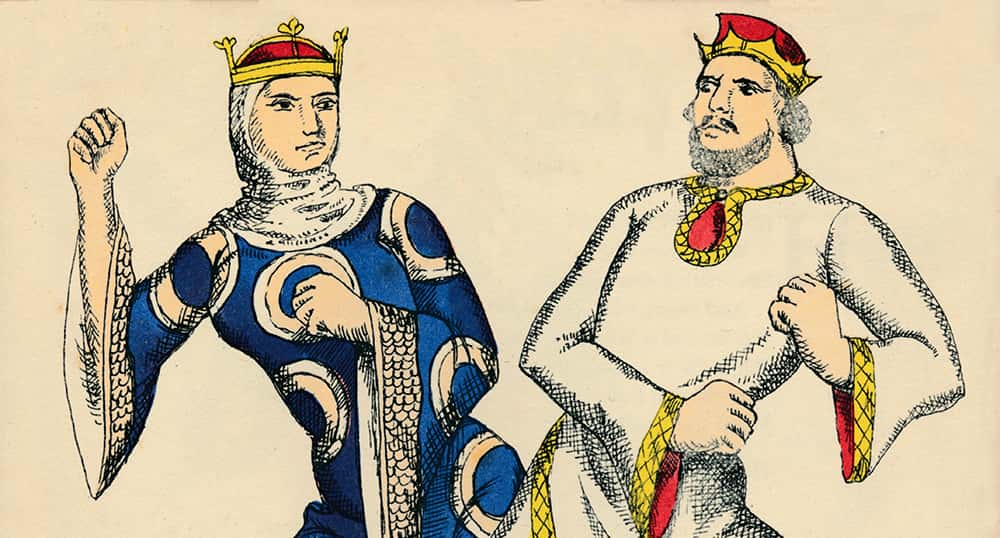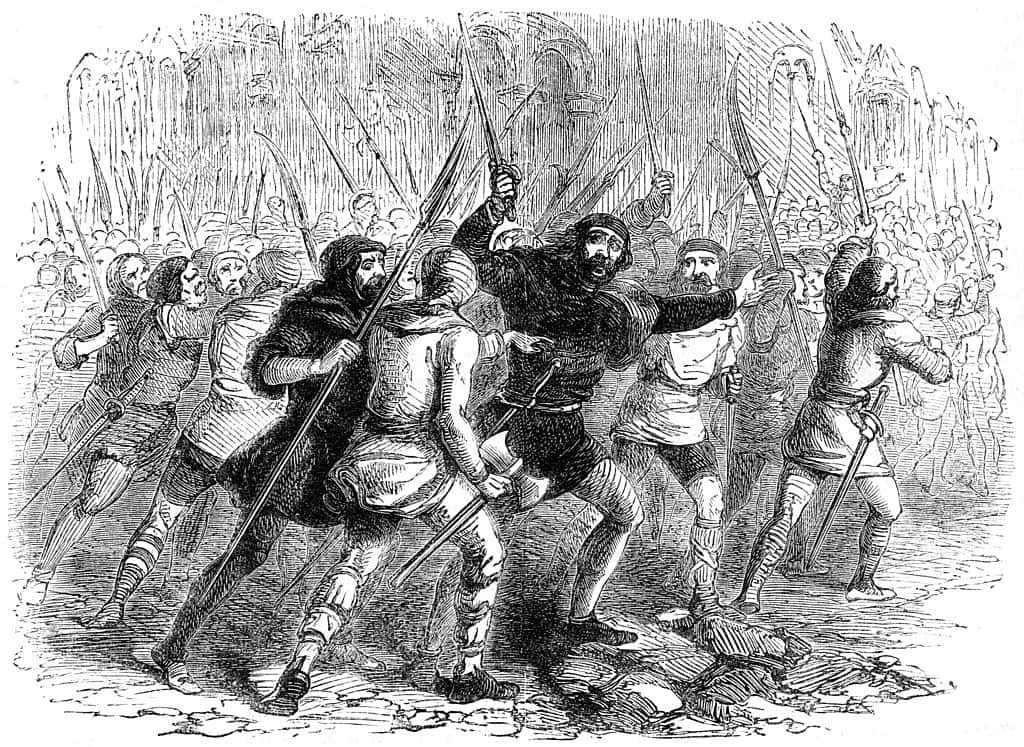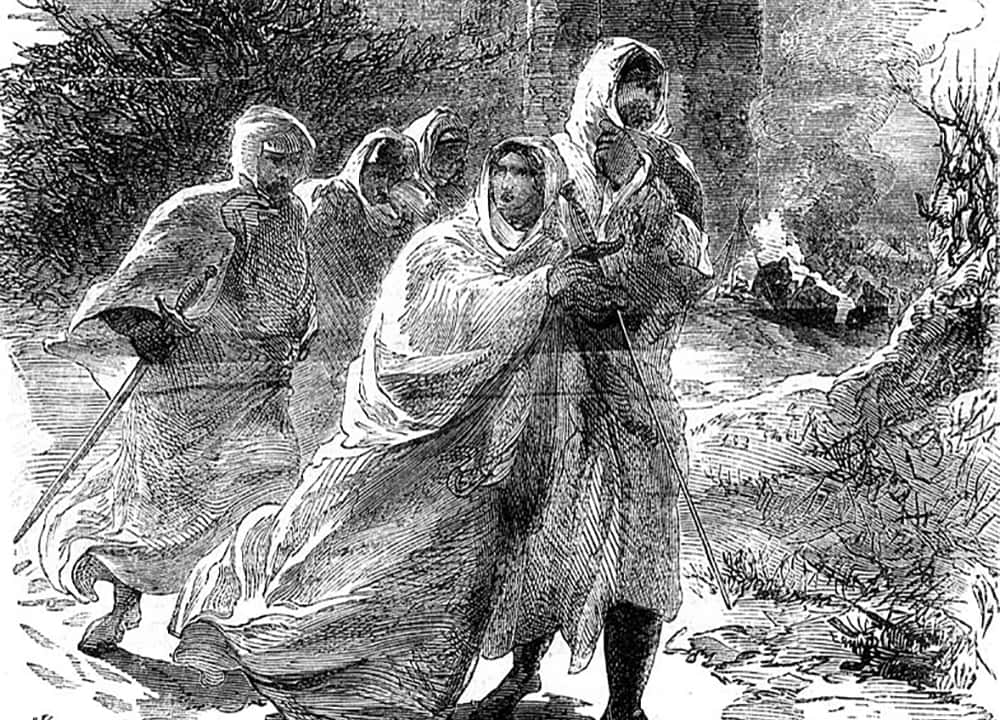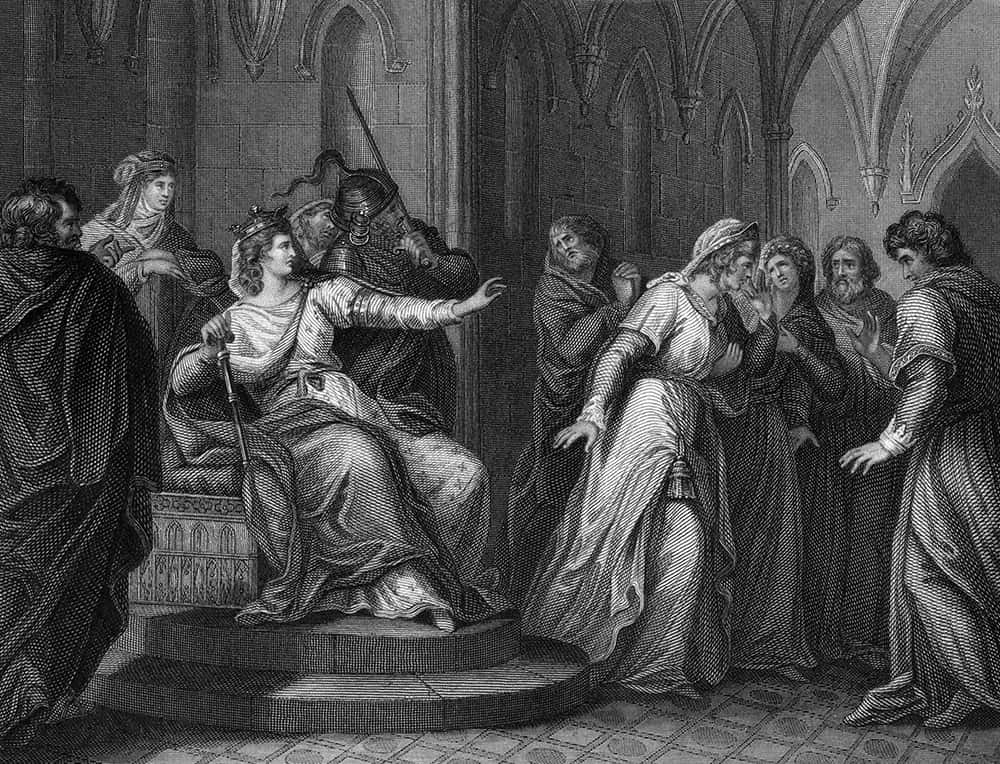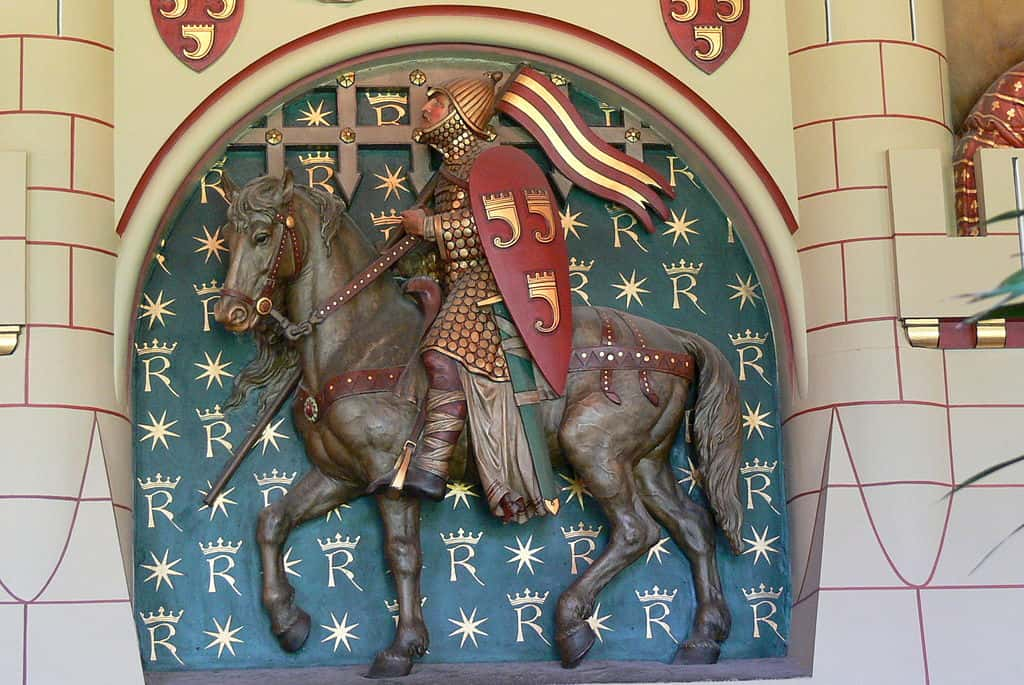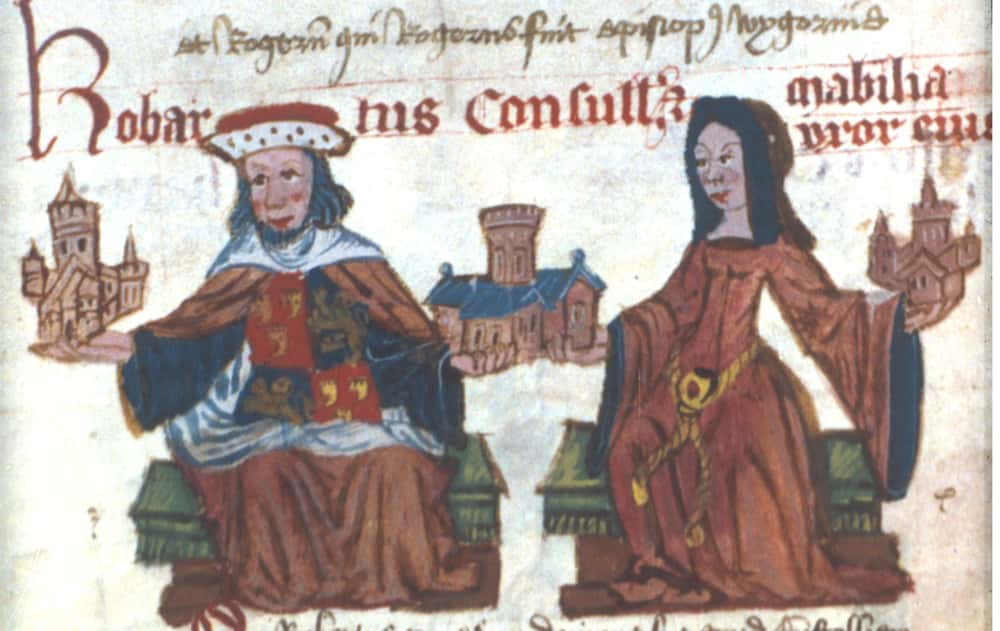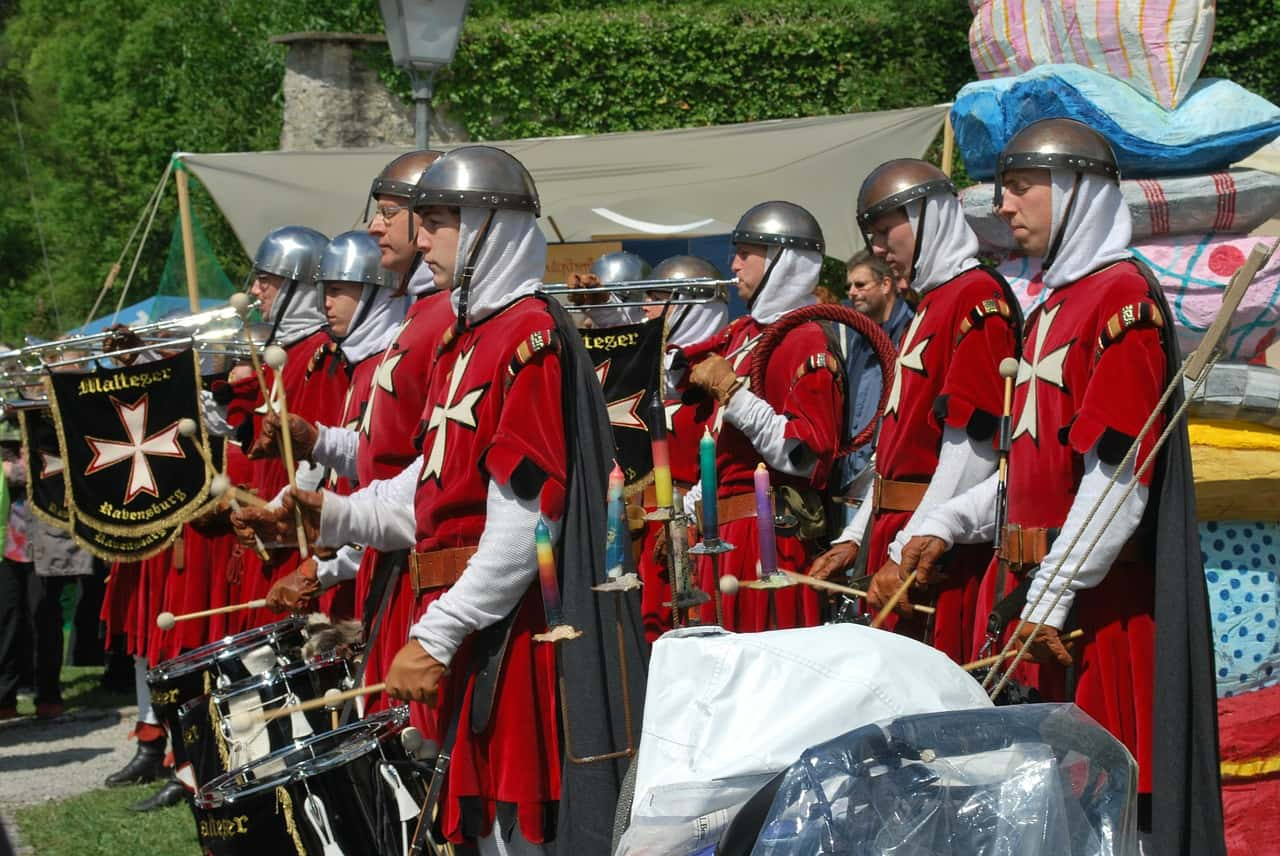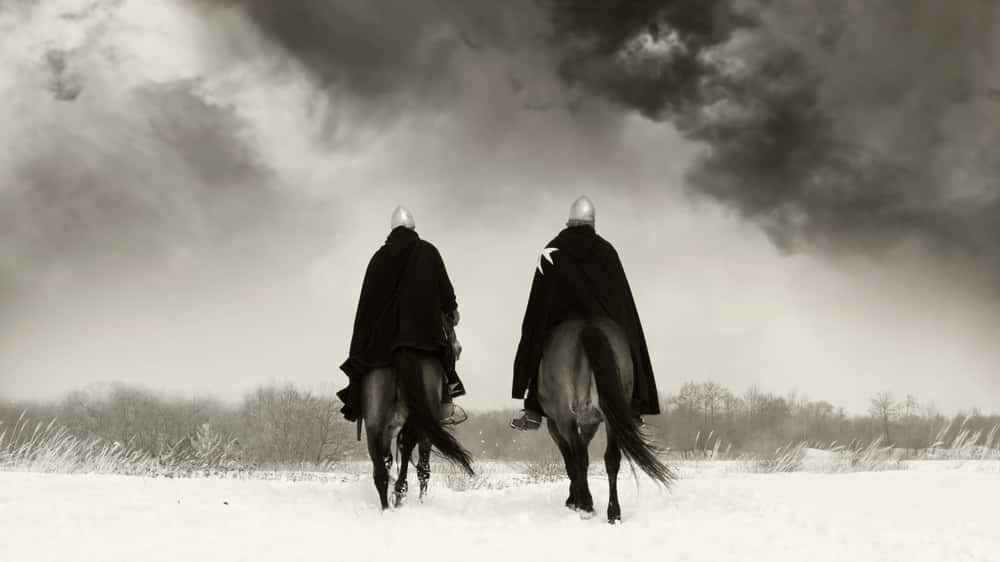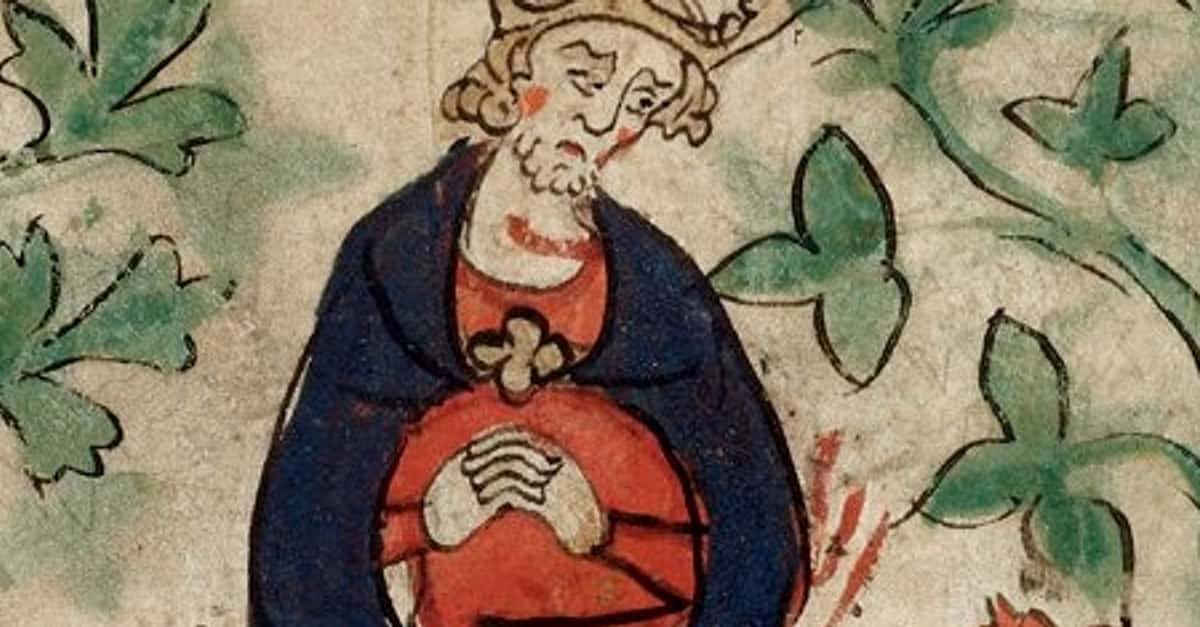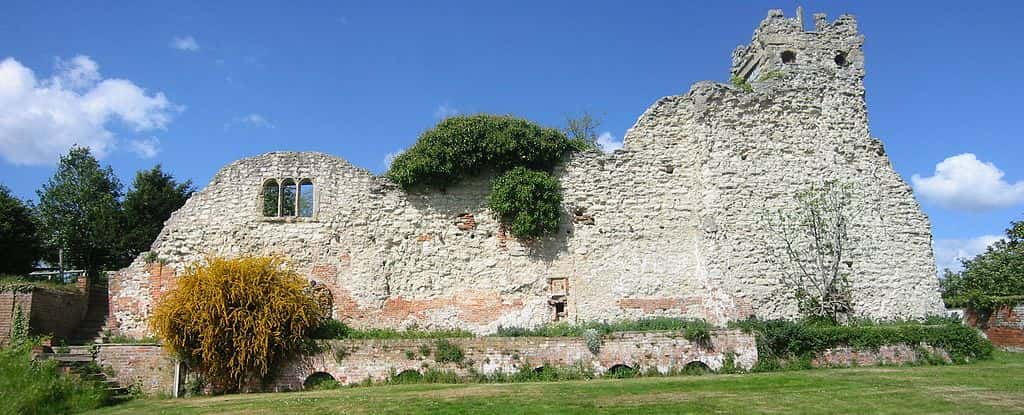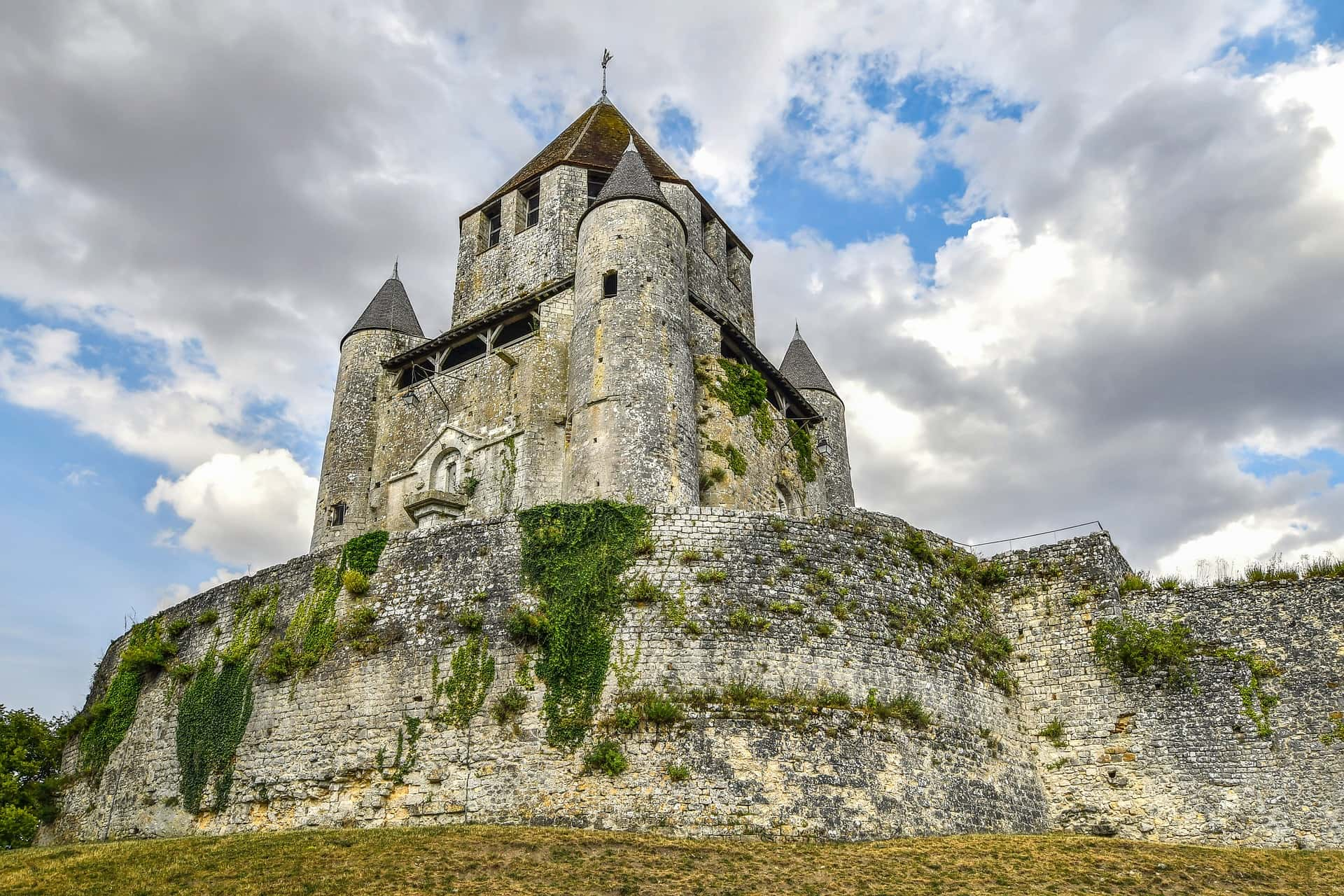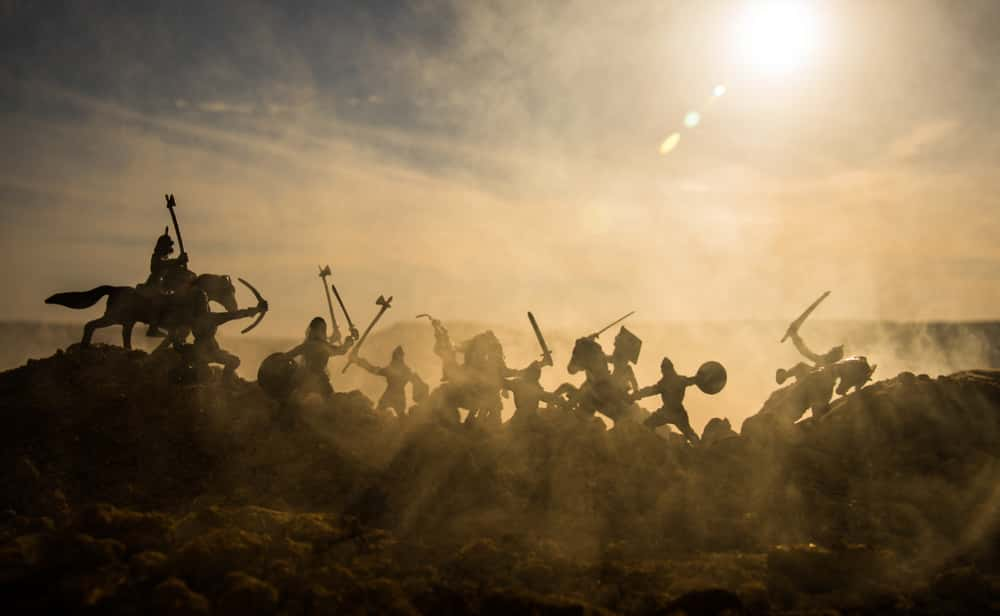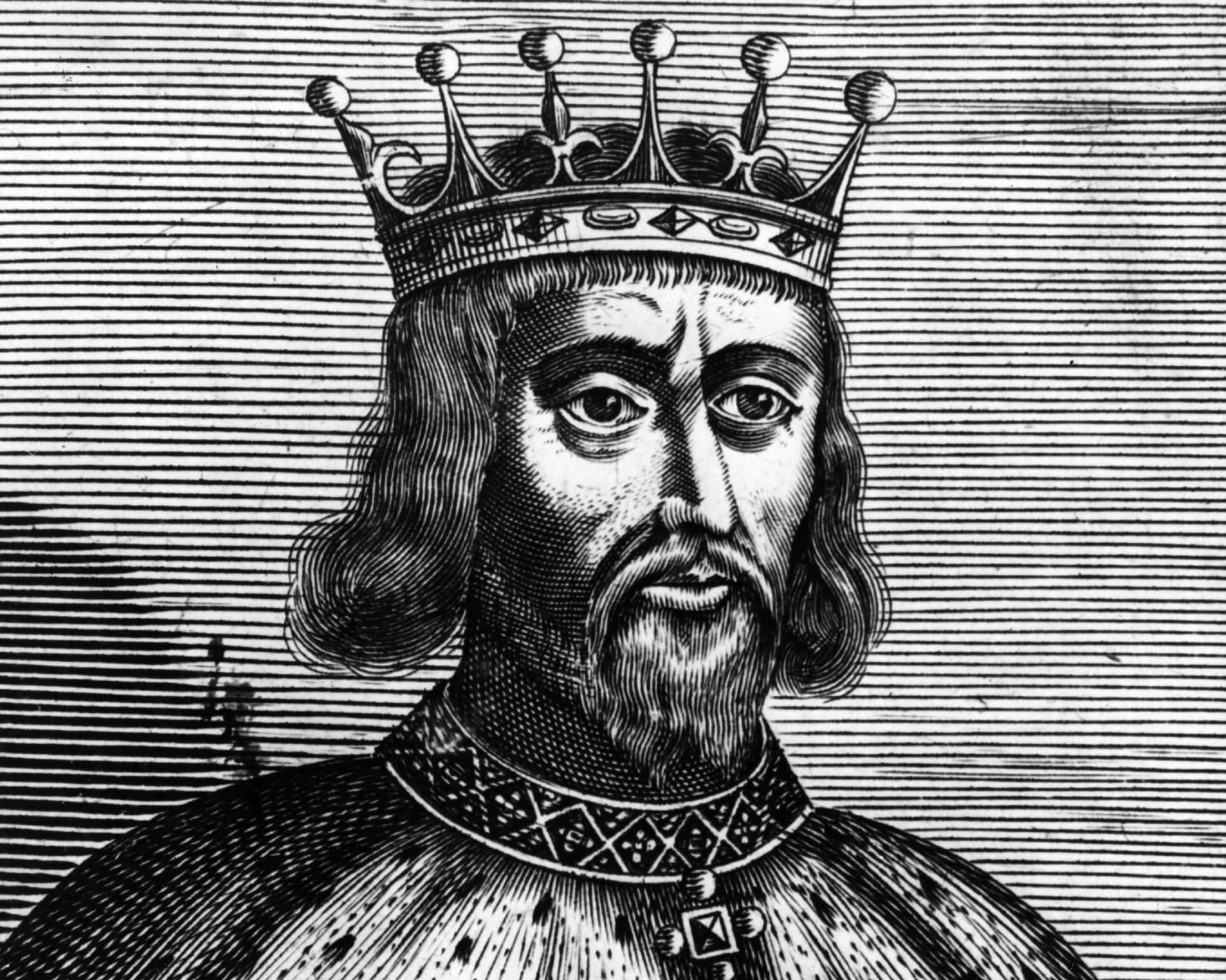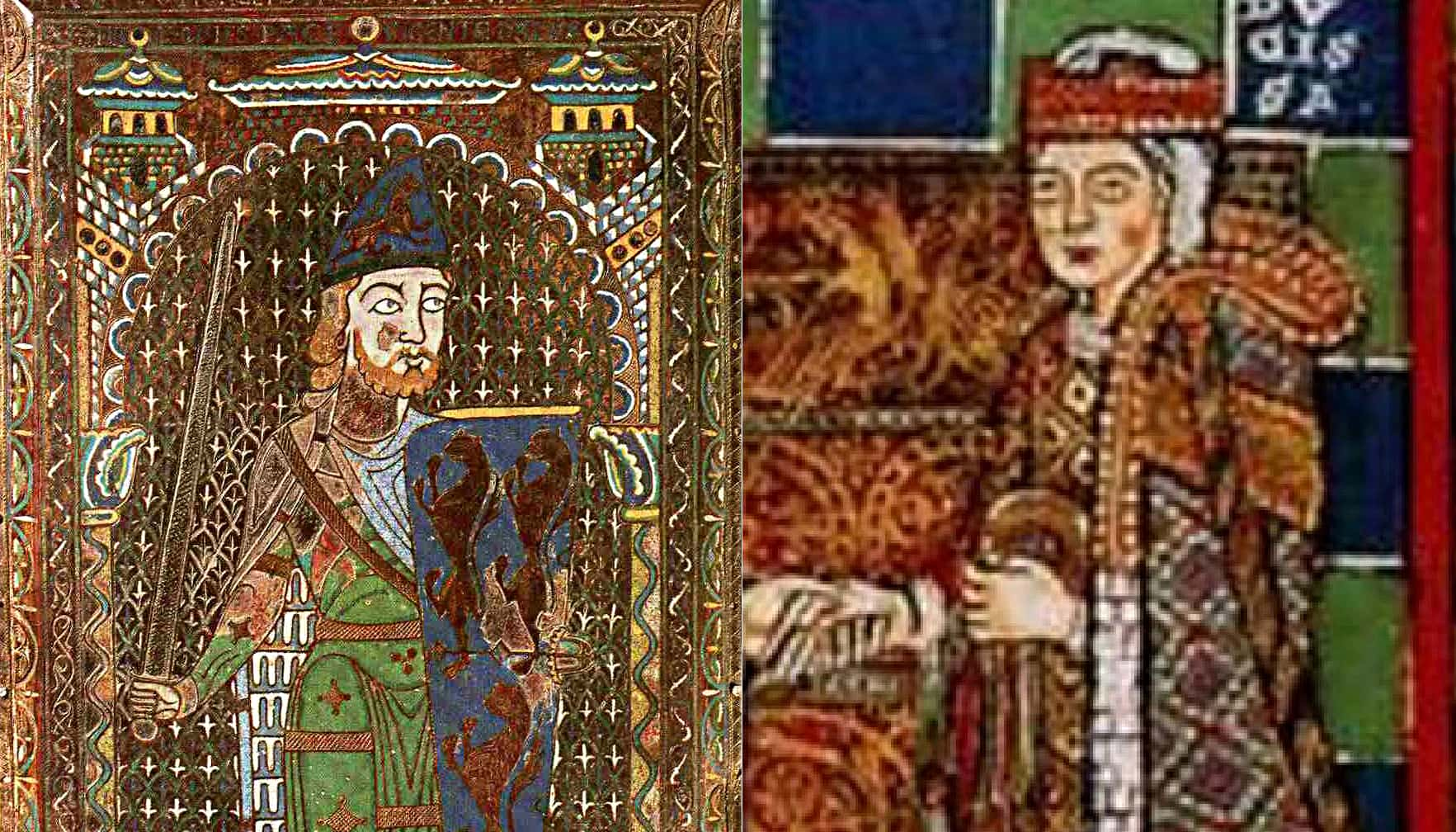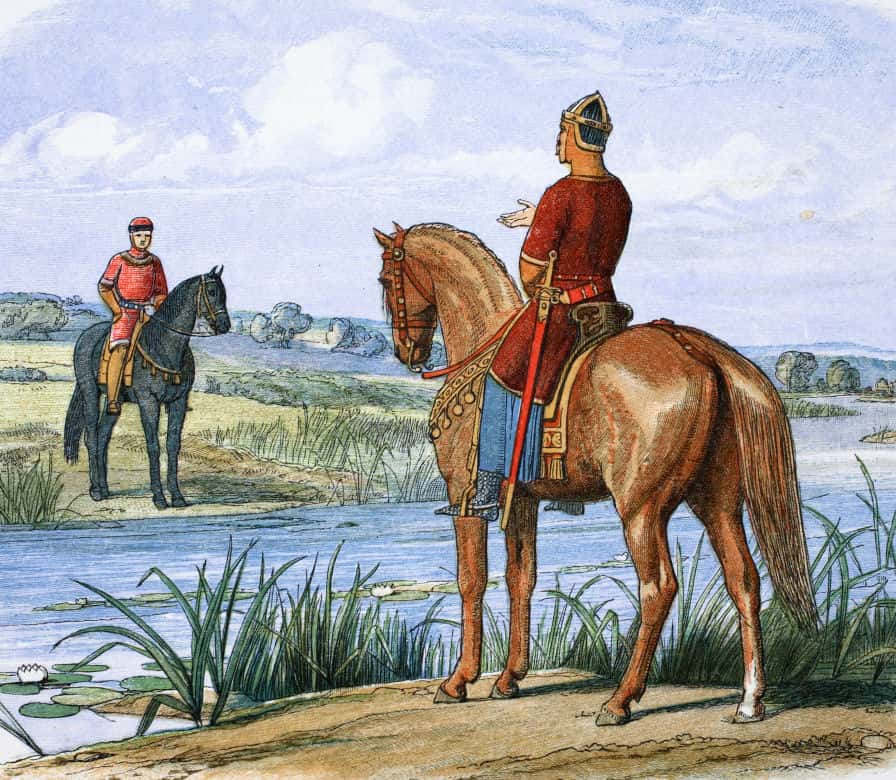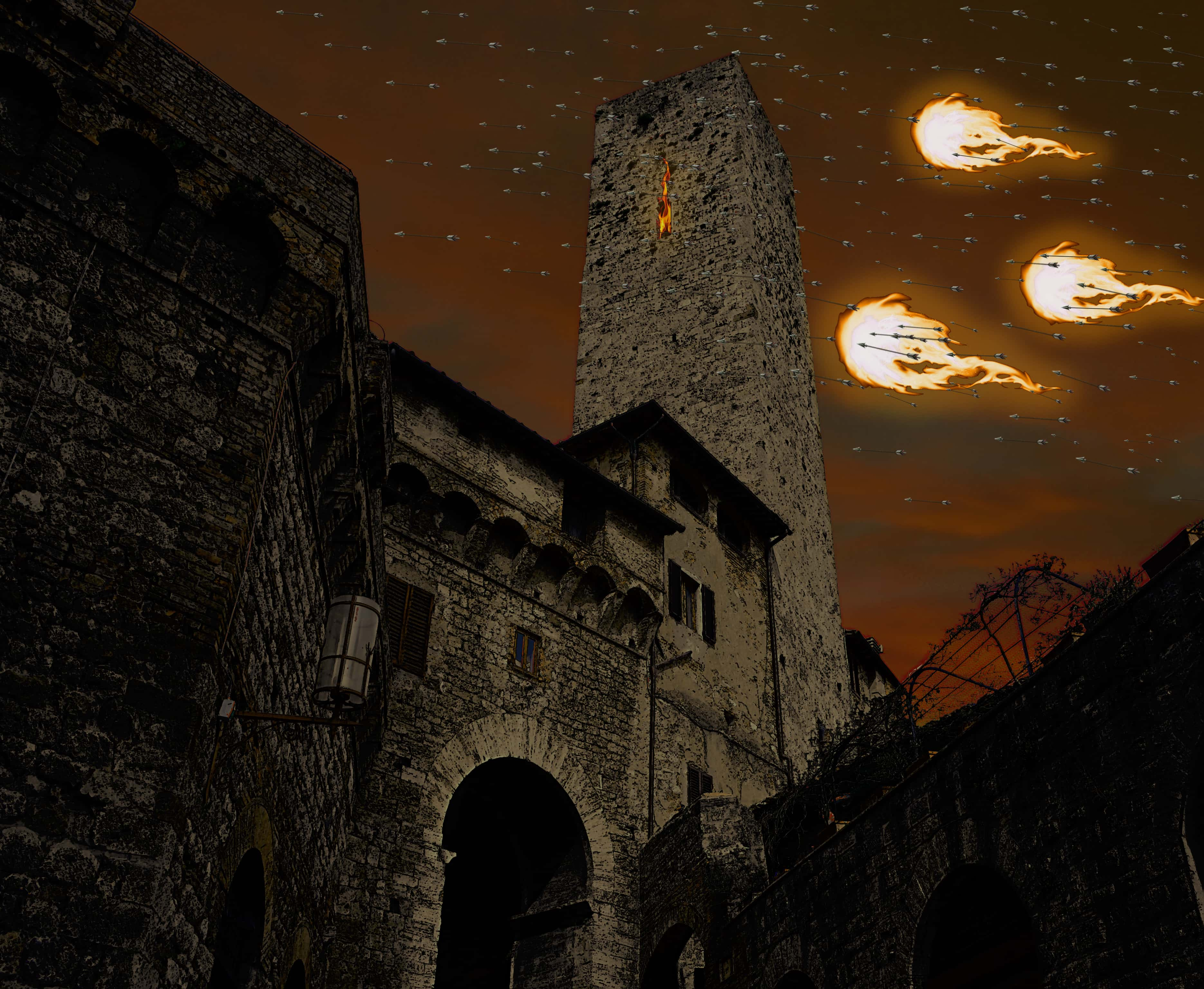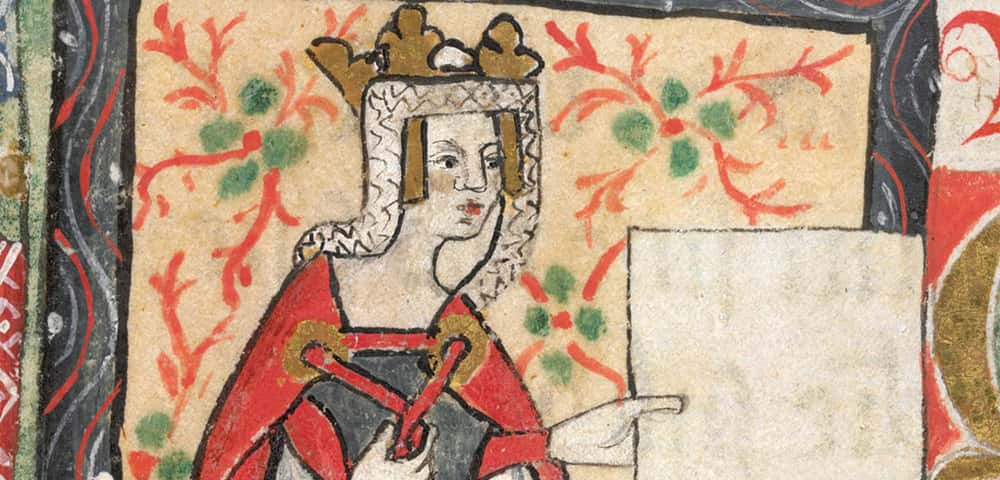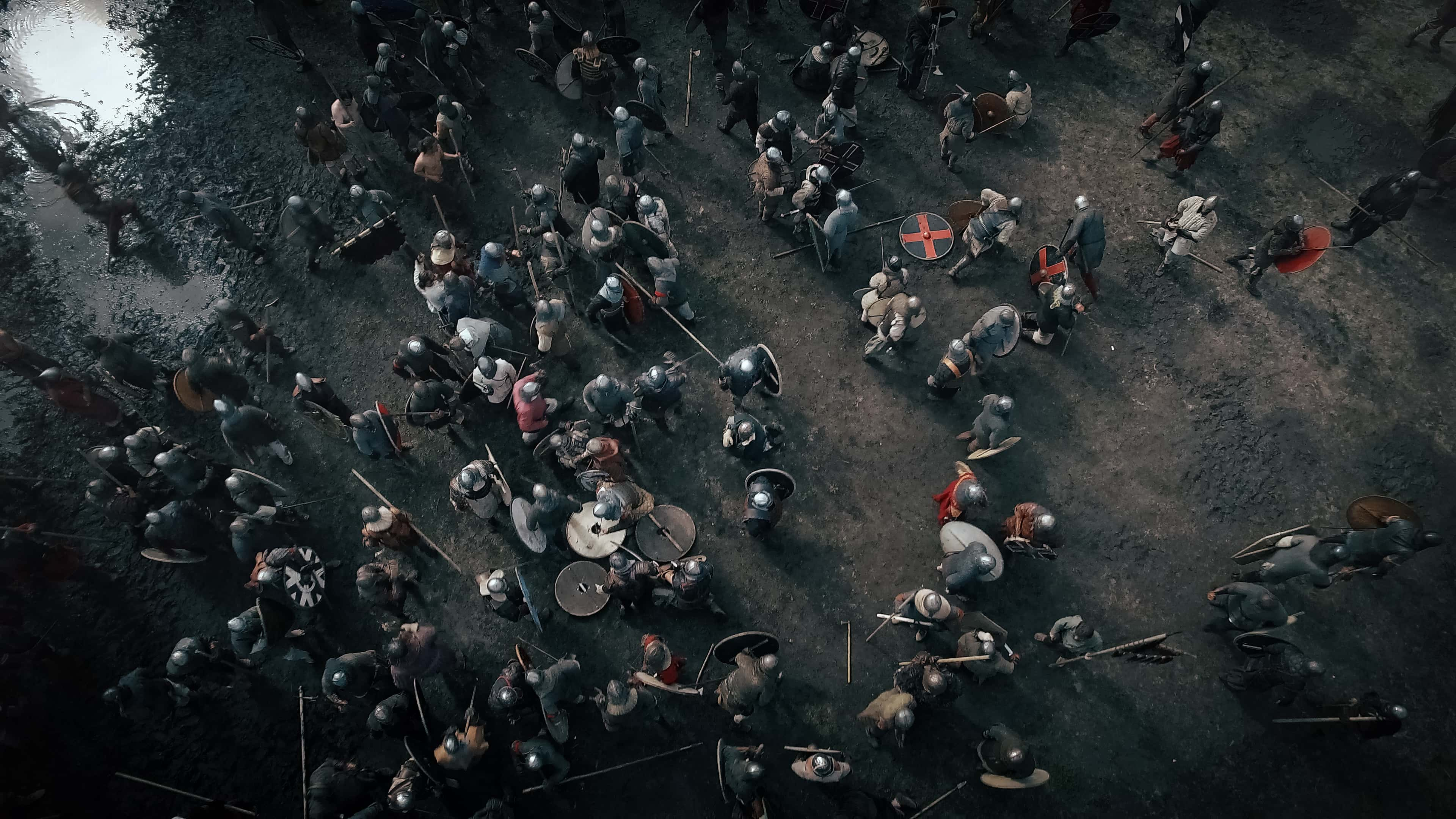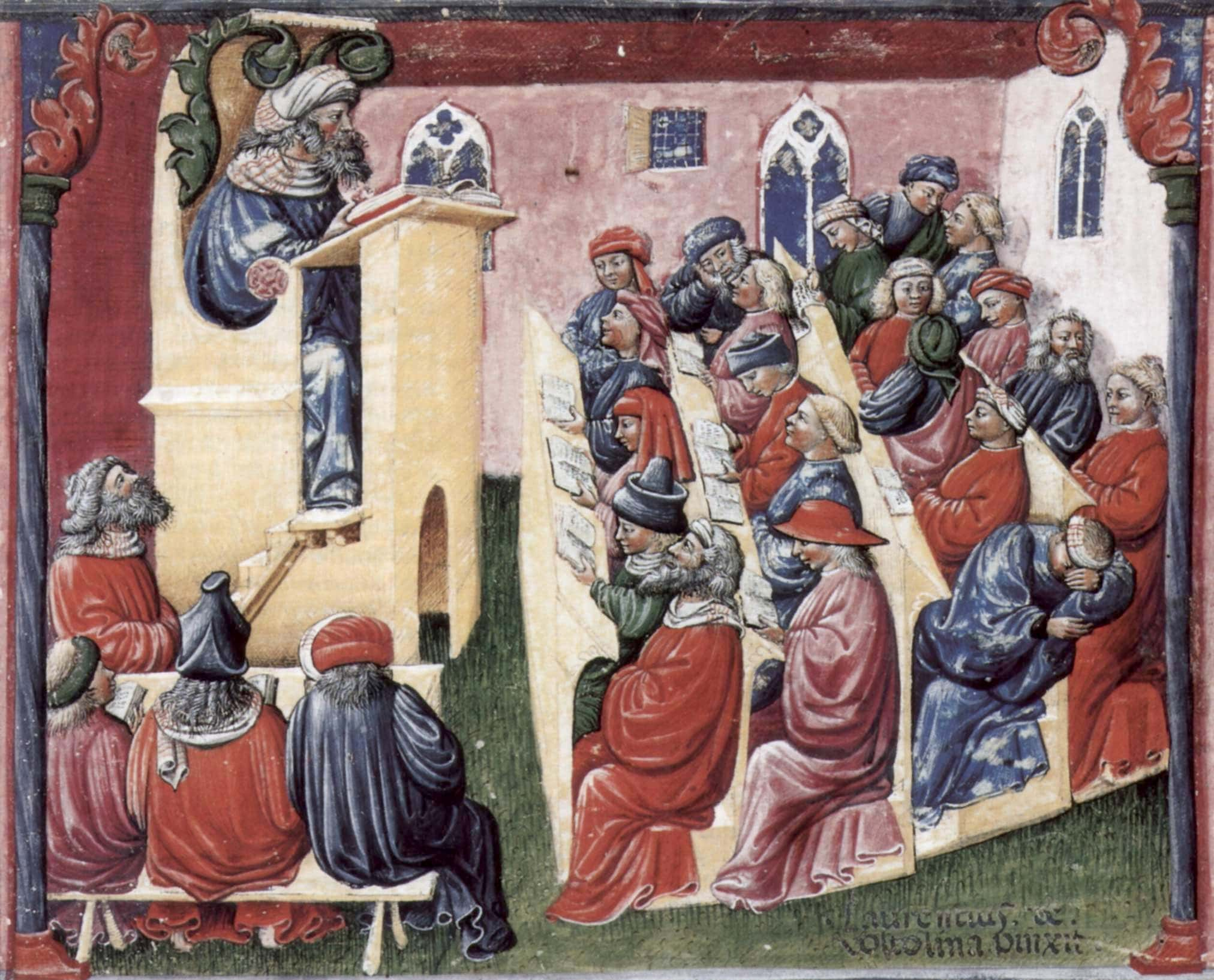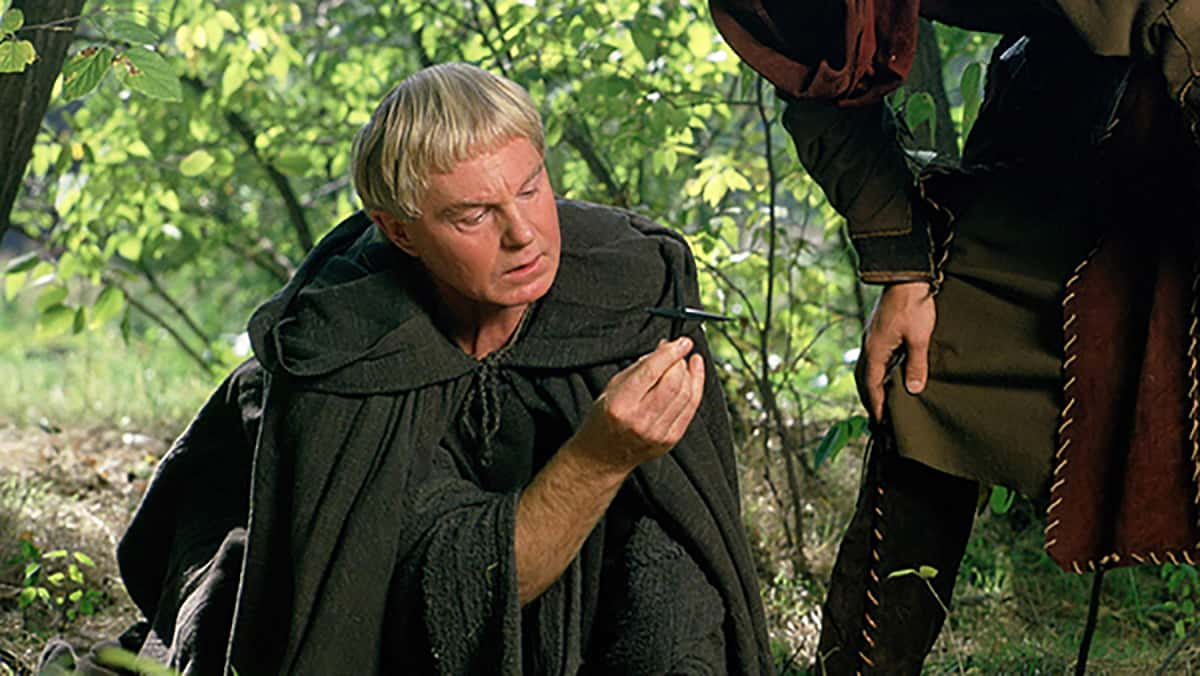Before the English Civil War and the Wars of the Roses, England was torn apart by the Anarchy. In a struggle to take the throne, various members of the royal family engaged in a bitter conflict that led to bloodshed, chaos, and, true to its name, all-out anarchy. We're pulling back the curtain on some of England's lesser-known—but still all-important—battles.
The Anarchy Facts
1. Shy of Two Decades
The Anarchy lasted from December 1135 AD to November 1153 AD. That’s almost twenty years of conflict.
2. Long Ago…
To understand the Anarchy, we need a quick reminder of what was going on years before. In 1066, a Norman lord known as William the Conqueror lived up to his name by conquering the Anglo-Saxons and declaring himself to be King of England. After William kicked the bucket, his ambitious sons squabbled over their portions of dad's property, to the shock of absolutely no one.
3. The First Henry
In 1100, William the Conqueror’s fourth son, Henry, handily defeated his brothers and unified various territories that dear old dad had left behind. With these achievements, Henry levelled up and became King Henry I of England. He ruled for decades despite threats from England (awkward, seeing as he was supposed to be the country's King) and from France (the French king thought he was the true ruler of Henry’s Norman territory).
In short, everyone hated Henry and he was pretty much guaranteed a grim demise.
4. “The Gallant Prince is Dead”
Disaster struck the court of King Henry I in 1120 when his only son and heir, William Adelin, passed away. Adelin was on board the White Ship in the English Channel when the boat hit a rock and sank. Nearly everyone drowned, including young Adelin and, awkwardly, many of Henry I’s illegitimate children, who also happened to be on the vessel.
Sadly, Adelin nearly escaped his doom. He was initially secure on a lifeboat, but when he heard his half-sister’s cries for help, he tried to save her. In the end, so many desperate people clung to the lifeboat that it overturned. Despite his noble intentions, Adelin drowned.
5. A Near Miss
One of the prime contenders for the throne during the Anarchy, Stephen of Blois, was supposed to be on the White Ship when it sunk to the bottom of the sea. However, Stephen escaped the disastrous voyage when pressing nobleman business caused him to unexpectedly stay home. By this I mean that Stephen nobly had diarrhea and couldn't board the ship.
6. Eye of the Beholder
We know so much about the Anarchy because we have quite a few historical records. Many of the chroniclers who wrote about the Anarchy lived during the 12th century, meaning the details of the conflict were still fresh. Each record also has a clear bias based on who’s writing it, giving us further insight into the time's different attitudes. These conflicting perspectives would inspire a certain fictional writer, but we’ll get to that later.
7. Daddy’s Little Girl
With the demise of his son, Henry I faced a succession crisis. He had several nephews who wanted to be his new heir and the king also considered his illegitimate son, Robert of Gloucester. But in the end, Henry I went with someone else: his last legitimate child: Matilda. Though she was already powerful because of her marriage to the Holy Roman Emperor, taking on her dad's mantle placed Matilda on an entirely new level.
8. Like Any Good Royal Parent
Henry I spent the last years of his reign trying to prevent a succession crisis. He demanded his nobility to swear that they would recognize Empress Matilda as his heir. Henry also made a political match when he married Matilda to Geoffrey of Anjou (also called Geoffrey the Handsome—get it Matilda!). This wedding was quite the scandal, because Geoffrey's family were old enemies of Henry’s family. Even so, Henry did what he had to do. He made sure that when Matilda took the throne, everything would be ready for her reign.
9. Undermined at Every Turn
Henry really tried to avoid a crisis, but unfortunately, the people of England hated the idea of Matilda. And it didn't help that she was married to the King's old enemy, Geoffrey of Anjou. Determined to make her rule work, Matilda asked her dad to give her his lands in Normandy while he was still alive and thus cement her position as a ruler. Unfortunately, Henry refused, feeling like his new son-in-law Geoffrey was secretly behind the request. As you can imagine, relationships between father, daughter, and son-in-law got very strained.

History's most fascinating stories and darkest secrets, delivered to your inbox daily.
10. Enter the Challenger
Like many other nobles in England, Stephen of Blois swore an oath of loyalty to Matilda when Henry I demanded it. However, when Henry passed in 1135, Stephen saw an opportunity to take control. You see, Henry died in Normandy while trying to put down a rebellion with the help of Matilda and Stephen. So while Matilda was in France, Stephen was much closer to England. He took advantage of the chaos and had himself crowned king.
11. Likability Goes a Long Way
Despite not being King Henry I's heir, Stephen had a few things going for him when he usurped the kingship. By all accounts, Stephen was incredibly charismatic, generous, and courteous, plus he was an admired warrior. However, Stephen’s well-documented bravery had dark roots. His father was accused of cowardice during the Crusades. Might Stephen be making up for something?
12. What About Me?!
Around this time, Matilda faced a lot obstacles between her and the throne. Due to her gender, people refused to believe she could lead troops into battle. But when she tried, many writers found fault with that too and said she was arrogant. Frustratingly, they recognized that she got her determination from her father while in the same breath saying that because she was a woman, such behavior was unseemly. Oh, how times don’t change.
13. Would You Call That Ironic?
When Stephen took the throne in 1135, he didn't just step above Matilda in the line of succession. He also crossed his older brothers. Barons in Normandy wanted to put Theobald on the throne, since he was William the Conqueror's oldest grandson. (Also, unlike Matilda, he wasn’t a woman). However, they changed their minds when they heard about Stephen’s coronation. At that point, they figured he was good enough.
14. Let’s Sit Down and Talk
The Anarchy didn’t just see troubles arise within England. In response to Henry's death, King David I of Scotland invaded northern England. After David seized much of the northern territories, Stephen marched against him. Peace was restored when Stephen and David came to an agreement and David returned nearly all the land that he’d taken. In return, Stephen vowed that David’s son would receive land in England as part of his inheritance.
15. A Welsh Triumph?
Stephen’s reign had a lot of setbacks. First, in 1136, southern Wales rose up in rebellion against Stephen. They even managed to defeat the King's own forces! Then, by 1137, Stephen had to deal with serious money problems. At the same time, Matilda and her husband Geoffrey kept invading his Norman territory. All this led Stephen to metaphorically throw his hands up and saying “Fine, Wales, you do you.”
16. How About a Discount Skirmish Instead?
Despite lasting nearly 19 years, only around seven major battles were ever fought during the Anarchy. This was because it was highly risky to fight pitched battles (people preferred to raid land and take castles). Not only that, it was expensive to keep armies well-equipped and well-fed. Since Matilda and Stephen both struggled to make money during the campaigns, it made sense for them to both want to avoid large battles.
17. The Madness of Chivalry
In 1139, Empress Matilda sailed to England with a small but loyal force of knights, as well as her husband, Geoffrey of Anjou. She entered the castle at Arundel, only to be trapped inside when Stephen marched out and surrounded the fortress. Despite having his rival for the throne in his hands, Stephen surprisingly let her go. He even provided an escort so Matilda could be reunited with her strongest ally and half-brother, Robert of Gloucester. Why would he do this? Strap in.
18. Oh Honey
Historians still don't know why Stephen basically helped his biggest enemy escape his clutches. Some argue that he was playing the long game. Instead of using his forces to fight at Arundel, he'd let Matilda go and then fight his truly powerful enemy, Robert of Gloucester, at full power. Another theory was that Stephen was acting on the code of chivalry in regard to women in war. If that was the case, he paid a heavy price his gentlemanly conduct.
19. More Courage Than Sense
By 1141, Stephen had made enough enemies that Matilda could challenge him directly at the Battle of Lincoln. Stephen and Matilda’s forces met on the battlefield with Stephen personally leading his men. Despite Stephen’s bravery, however, the battle was a disaster for his side. His men fled as Matilda's side took Stephen as their prisoner.
20. My Better Half
One Stephen’s most important allies during the Anarchy was his own wife, also named Matilda (I swear to God, sometimes it seems like English history just recycles the same ten names). After Stephen’s capture, Matilda rallied his demoralized allies and continued the conflict until Stephen was freed. We can only hope that he never forgot their anniversary ever again after that.
 Getty Images
Getty Images
21. That Could Have Gone Better
Despite her success in capturing Stephen, Matilda’s position was still very precarious. In the spring of 1141, Matilda traveled to London (the same city which had enthusiastically declared Stephen their king in 1135). While there, she arranged for her own coronation. But mere days before she should have received her crown, the city’s population rose up against her. She and her followers had no choice but to flee to Oxford.
22. How Did She Do That?!
In the winter of 1142, Stephen besieged Matilda in Oxford Castle. When supplies dwindled, it looked like the war would end with the castle’s surrender to Stephen. However, in an act of courage that quickly became, Matilda somehow slipped out of the castle, either through a postern door or by climbing down a rope from a wall.
Due to the heavy snowfall, she dressed in white to evade detection as she made her escape. One version even claims that she fled across the frozen Thames River before taking a horse. As you can imagine, no one is sure about just how much of this remarkable story is true. But still, it's too good not to share!
23. The Empress and the Queen
The great irony of the Anarchy, and especially particularly the gender-bias against Empress Matilda, is that the Anarchy’s most significant battle was fought by armies led by two women, both named Matilda! King Stephen’s wife and the Empress met in battle at Winchester on September 14, 1141. It was here that Queen Matilda mustered an army of men and besieged her rival in Winchester.
24. Girl On Girl
After a siege, the Empress and her army broke out of Winchester and fled, only to be caught in a battle so one-sided that historians simply refer to it as the Rout of Winchester. While the Empress escaped, Robert of Gloucester was captured. In decades of chaos, this just might have been Matilda's rock bottom moment.
25. Let’s Talk, Wife to Wife
The capture of Robert of Gloucester was a serious blow to Matilda, as he was both her most loyal follower and her best military commander. However, she absolutely refused to trade the imprisoned King Stephen for Robert, which was the price that Stephen’s wife, Queen Matilda, demanded.
When the empress stuck true to her guns, however, Queen Matilda instead turned to Robert of Gloucester’s wife, Amabel. Amabel was conveniently in charge of guarding Stephen, so when nobody was looking, the two wives agreed to trade each other’s husbands. Sneaky!
26. Intermission
During the Anarchy, numerous conflicts got sidelined during the Second Crusade in 1145. Many noblemen and soldiers in England and Normandy stopped fighting to travel to the Holy Land and secure it from the Turks. A large part of those who left owed fealty to Empress Matilda and were gone for several years because of the Crusades. Talk about a long sick leave.
27. Thanks, Bro!
Stephen owed much of his success was his younger brother, Henry of Blois. As the Abbott of Glastonbury and Bishop of Winchester, Henry was one of the very wealthiest men in England. He used his influence with the Church to get his brother crowned.
28. What an Ingrate
In a case of extreme irony, Henry of Blois owed all his success to the old king Henry I (what did I say about English history reusing names, people?). It was Henry I who appointed Henry of Blois to the Abbey of Glastonbury and then worked to turn him into the Bishop of Winchester. In gratitude, Henry of Blois tirelessly worked to undermine Henry I’s last wishes and crown Stephen instead of Empress Matilda.
29. One Heck of a Structure
Wallingford Castle was one of the most significant locations of the Anarchy. The strength of the castle and its close proximity to London meant that both Stephen and Matilda wanted it. They wanted it bad. When the castle’s owner, Brien Fitzcount, sided with Matilda, Stephen laid siege to the property. Unfortunately, that didn't go great for him.
30. Well, Dang
In the end, King Stephen gave up trying to take the castle and instead raised two counter-castles of his own. Think about that for a second: Wallingford was so great that Stephen genuinely thought it was easier to build two new castles rather than continue to siege Fitzcount's property.
31. Small Crowd
Despite the significance of the Battle of Lincoln in 1141, the number of troops who fought during the battle actually numbered less than 2,500!
32. Young Hank
One of the rising stars to emerge from the Anarchy was Henry Plantagenet, the son of Empress Matilda. Even though he was just a teenager, he would prove himself to be a brilliant soldier and commander during the conflict in Normandy. He would later rule the Angevin Empire (which included England) as Henry II.
33. Passing the Baton
After years of chaos, the Anarchy finally ended when Stephen and Empress Matilda came to an agreement in 1153. They decided that Stephen would remain King of England for the rest of his life. But when he kicked the bucket, Matilda's son Henry Plantagenet, would take the throne. However, there was just one problem with this plan.
34. Not So Fast!
Stephen’s son, Eustace was understandably furious about being passed over. He refused to accept his dad's decision to give the throne to Henry rather than his own son. Luckily for the peace talks, Eustace fell ill and died while collecting forces for an independent campaign. Yes, that timing seems suspiciously convenient, but surprisingly there's no evidence to suggest foul play. Go figure.
35. So… Is it Over?
Stephen, Matilda, and Henry Plantagenet's Treaty of 1153 was far from a sure way to end the war. Not only were Henry's enemies constantly trying to off him, there were rumors that Stephen planned to have Henry killed. Fortunately for fans of peace, King Stephen did not live long after his agreement with Empress Matilda. In yet another strange case of timing, Stephen passed in 1154 due to complications from a stomach disorder.
36. Mass Construction
During the Anarchy, many defensive castles were raised all across England and Normandy. The exact number has never been determined, though estimates range from 126 to a whopping 1,115!
37. The Queen Who Never Was
In the end, Empress Matilda never ruled England as Queen, though she did govern her son’s territory in Normandy. After a very full life, she eventually passed on September 10, 1167, at the age of 65. She was entombed in Rouen Cathedral and received an epitaph that rerouted all her achievements onto the men in her life: "Great by birth, greater by marriage, greatest in her offspring.” Ugh.
38. Anarchy is Coming
Just like how George R.R. Martin based much of A Song of Ice and Fire books on the Wars of the Roses, he liberally adapted the Anarchy when he wrote The Princess and the Queen and Fire and Blood. Both books take place in Westeros and concern an earlier conflict between the Targaryen rulers. Just like with the Anarchy, the conflict revolves around a daughter chosen by her father to be the new ruler, only for a male relative to usurp her.
39. A New Era
With his ascension, Henry II began the rule of Angevin kings over the throne of England. This dynasty is also known as the Plantagenet dynasty. It would rule England for three centuries, ending with the conclusion of the Wars of the Roses and the death of King Richard III.
40. Hindsight is 20/20
The Anarchy only became known as "The Anarchy" in the Victorian Era. Victorian historians thought the 12th-century conflicts halted the development of the English constitution. In a judgy move, the Victorians decided to call the ceaseless conflicts "Anarchy" instead of a fancier name. Unsurprisingly, lots of historians think this is bogus and criticize the term to this day.
41. Long-Running Franchise
In the 20th century, scholar Edith Pargeter released a series of books about a 12th-century Welsh monk known as Cadfael. The books follow Cadfael as he tries to solve suspicious demises that take place while the Anarchy rages all around him. As bizarre as that sounds, the mystery series was hailed for accurately depicting England during the Anarchy. It was so popular that Pargeter released twenty-one books.
42. Let’s Take it to the Silver Screen
The Cadfael Chronicles, as they’re called, became a sporadic TV series consisting of four seasons and thirteen episodes on ITV1. The series starred Derek Jacobi as Cadfael, while also featuring Michael Grandage as King Stephen in one episode.
43. Were Any Characters Hunch-Backed?
In 1989, Ken Follett released the sweeping historical novel titled The Pillars of the Earth. The novel follows three generations of people who work together to build a massive cathedral in the English town of Kingsbridge during the Anarchy. Stephen, Maude (i.e./ Matilda), Henry II, and many other figures from the time period make an appearance, while Follett plays up a conspiracy theory that the White Ship wasn’t an accidental sinking, but rather a hit placed on the son of Henry I. The novel’s worldwide popularity led to two sequels, board games, and even a video game!
44. Was HBO Busy?
It should surprise nobody to learn that Ken Follett’s The Pillars of the Earth headed to TV screens around the world. Named after the novel, Starz and The Movie Network released the TV miniseries in 2010. Aside from the fictional characters, the series co-starred Alison Pill as Matilda (credited as Maud), Matt Devere as Gloucester, Clive Wood as Henry I, and Tony Curran as Stephen.
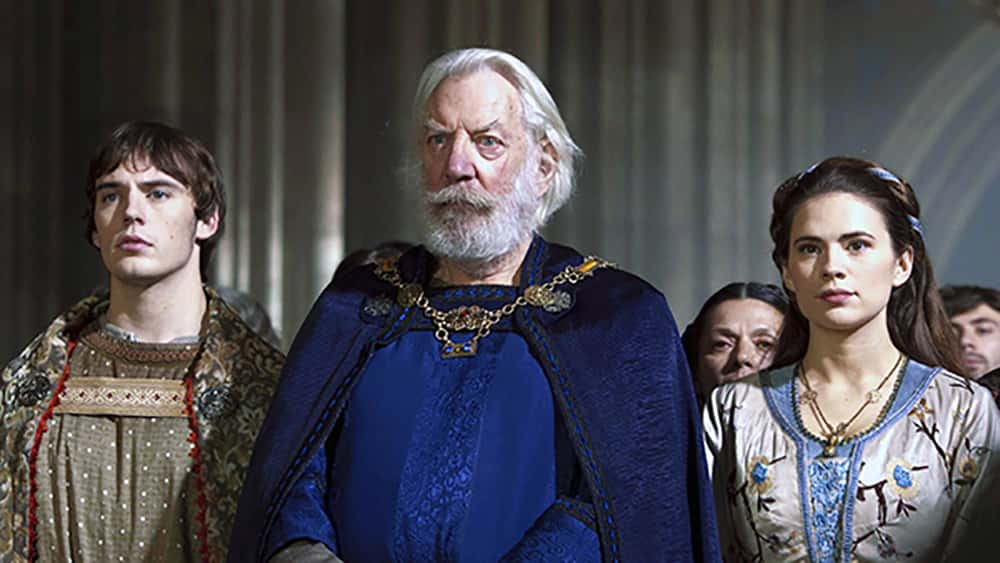 The Pillars of the Earth, Starz
The Pillars of the Earth, Starz



